Day 13 - Arequipa to Arica
The last riding day of our Machu Picchu tour has started. And although you might think there is not much to see in this desert area, we enjoyed the calmness of this vast, mountainous area.
I would like to thank all tour members for a wonderful riding experience in Peru.
Not only is it the ride and the landscape that account for a great motorcycle tour. Without like-minded riders like you, it would not have been such a fantastic time. I truly enjoyed travelling with you and the laughter we had.
Hope to see you another time on tour somewhere on the planet.
Always ride safely,
Your tour guide Angela
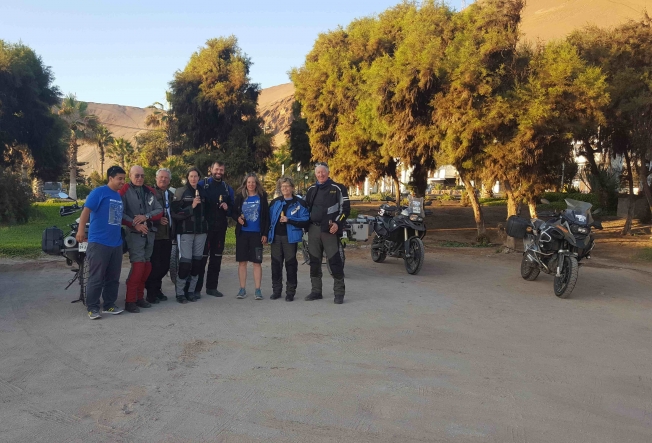
Back at the tour start hotel in Arica, everyone in the group felt great about our Adventure Machu Picchu Tour and so we celebrated it with the famous Edelweiss boot beer 
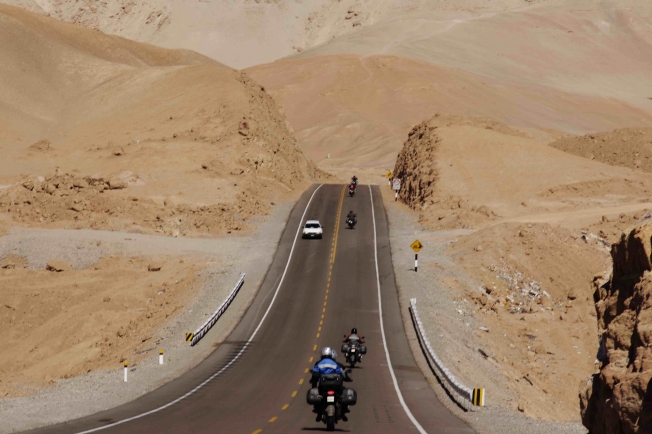
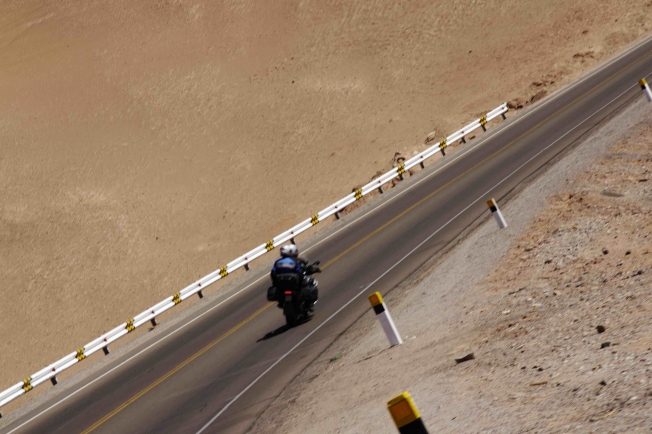
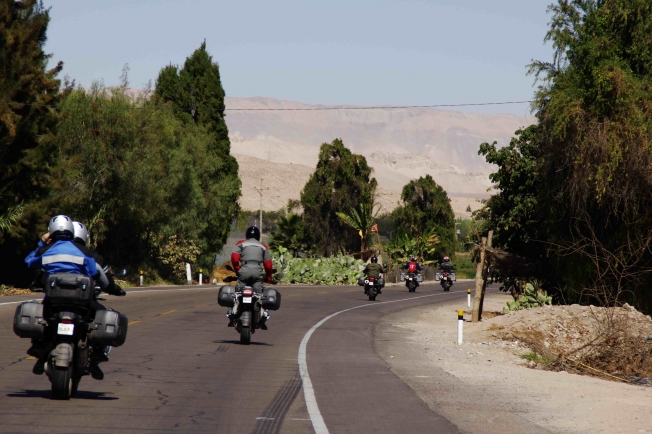
Day 12 rest day in Arequipa
Most of the guys went for a real rest day today and decided to take it easy. So Waltraud, Dieter and myself, we took the opportunity to visit one of Arequipa's main attractions - the monastery Santa Catalina.
Located close to the city centre, the monastery was founded in 1579 and originally served as a boarding school for the daughters of rich Spanish families. Before the earthquakes in 1582 and in the 1960s, the monastery extended an area of 20.000 sqms. Today there are only about 20 nuns left who run the monastery. Despite the unusually colorful place, it is striking to see with how little comfort those nuns had lived in those times.
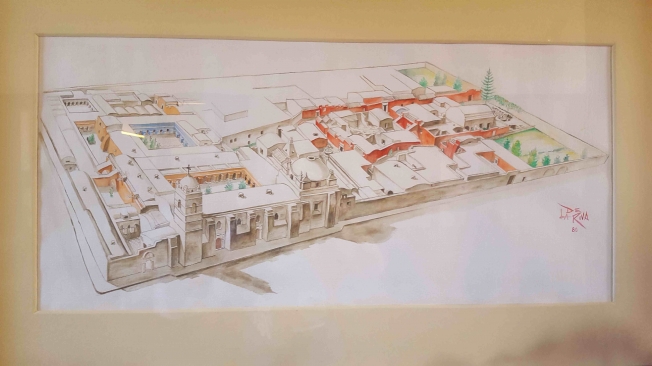
This painting gives you an idea of the size of the Sta. Catalina monastery. But only by walking it, you'll realise how big it actually is.
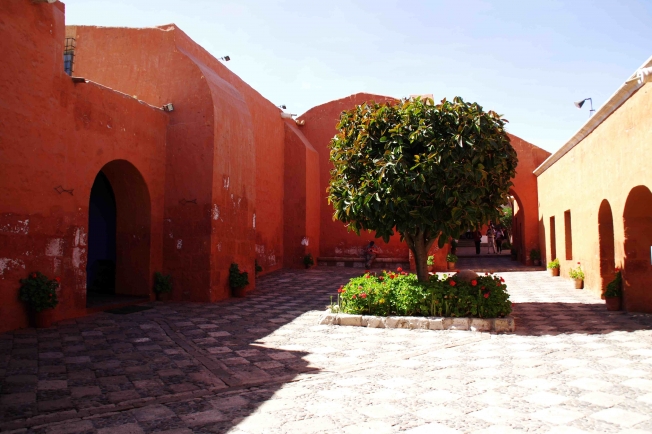
Looking at the grey stone walls from outside you would never guess that it is such a colourful place inside
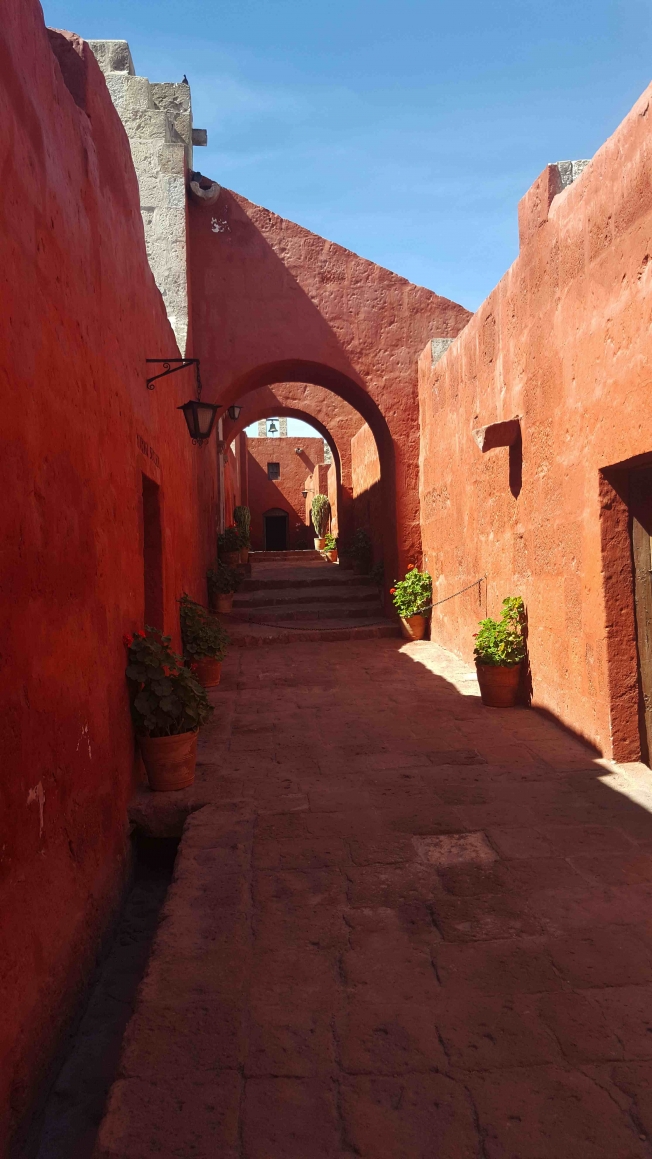
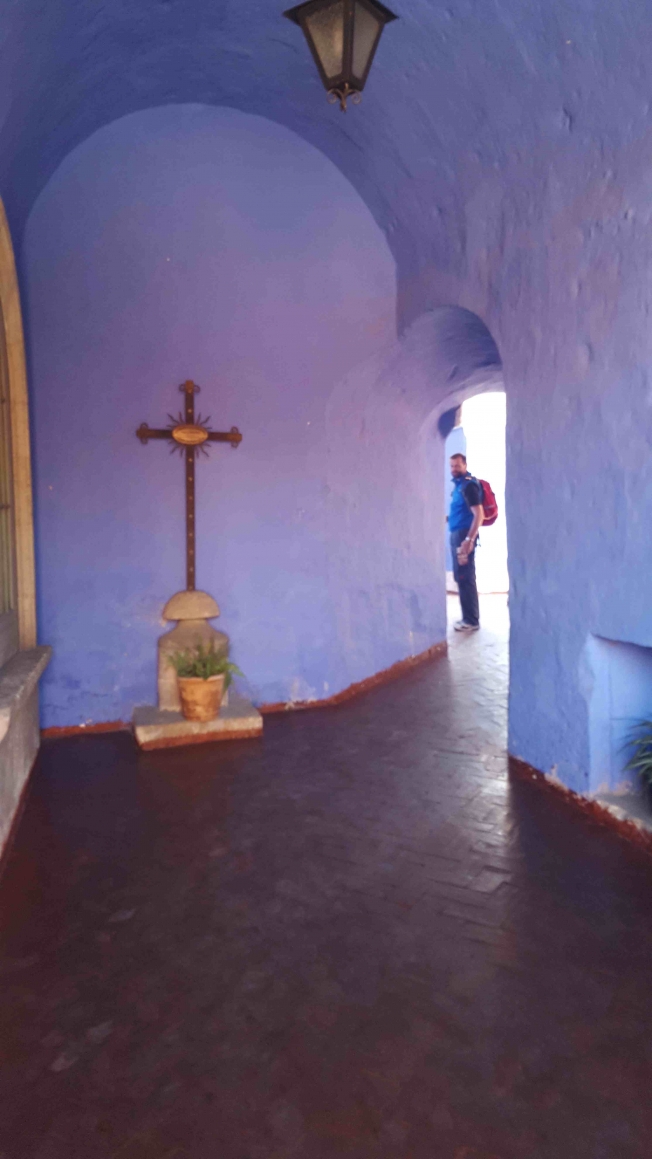
There are alleyways leading you from one courtyard to another
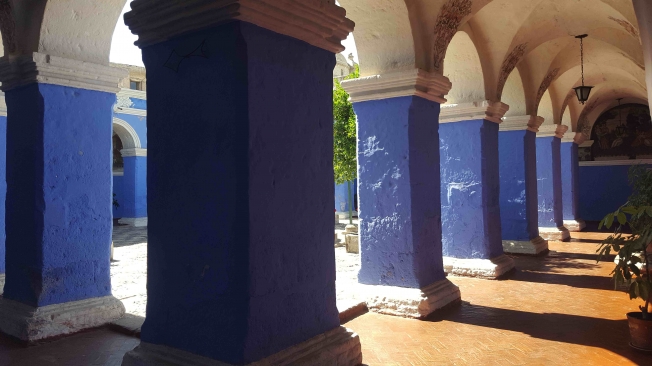


Elaborate paintings on the one hand but simple, almost prison-like rooms on the other hand

This is the room where the altar bread was being produced
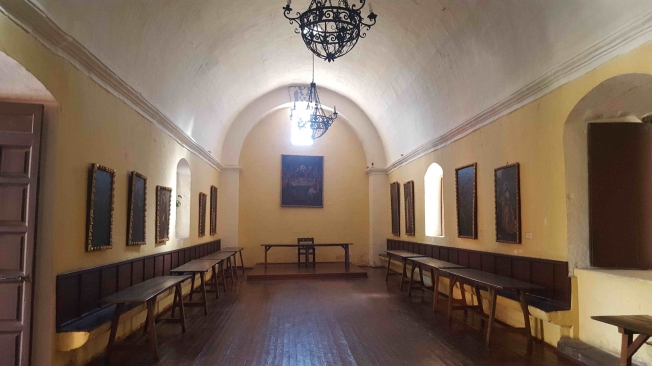
The nun's dining hall. What you can't see is the pulpit on the right side. It was used to read out religious texts to the nuns during their meals
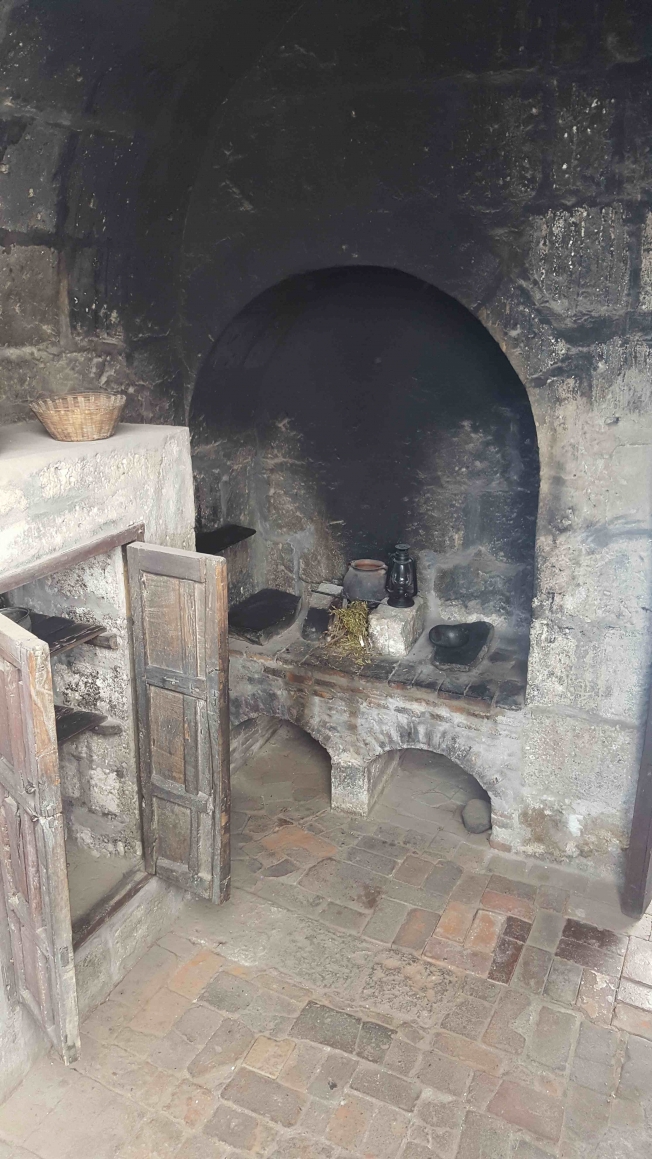
Stone-age IKEA 
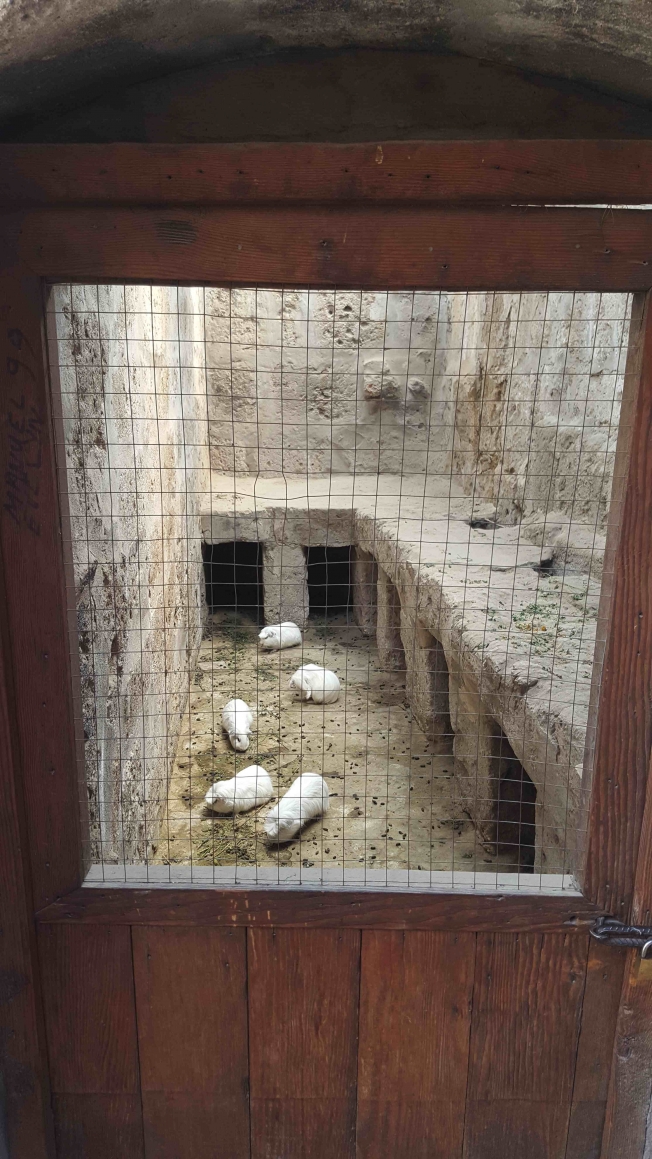
The difference between a European and a Peruvian?
The European thinks: "Oh look - guinea pigs! How sweet! Can I take one and stroke it?
The Peruvian thinks: "Oh - guinea pigs! I'll have mine well-done, please! 

A rare opportunity for a view over the monastery. Although the monastery has a couple of stairs that would lead up, they are either not reachable from the ground or locked. he nuns were not supposed to be influenced by the life that was going on outside the monastery's walls.
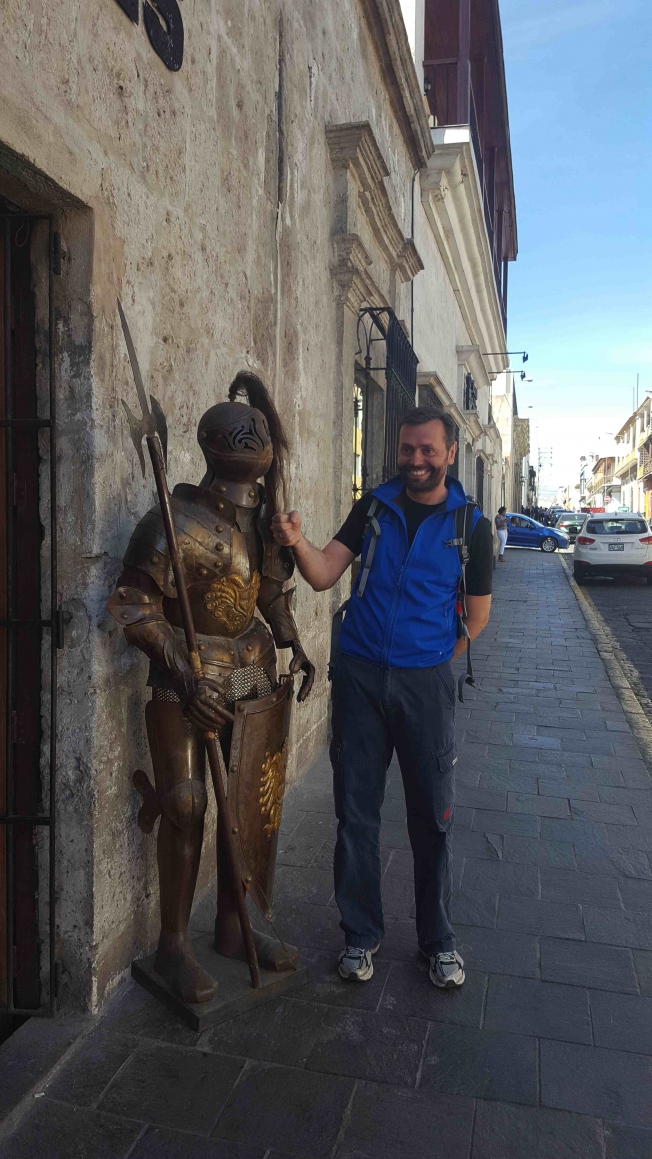
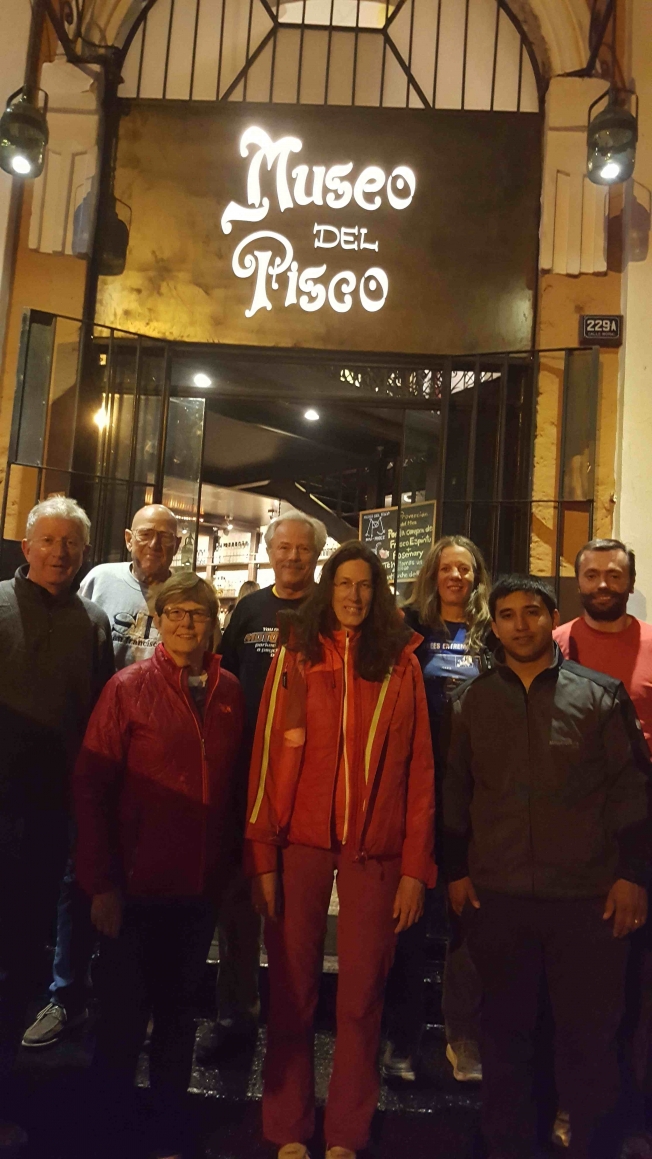
In the evening the whole group met again for a nice dinner
Day 11 - Chivay to Arequipa
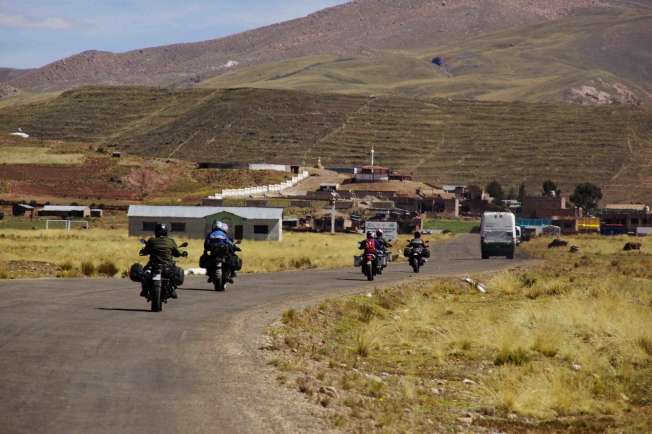
We said good-bye to Puno and the floating islands because another fantastic highlight of the tour was waiting for us in Chivay.
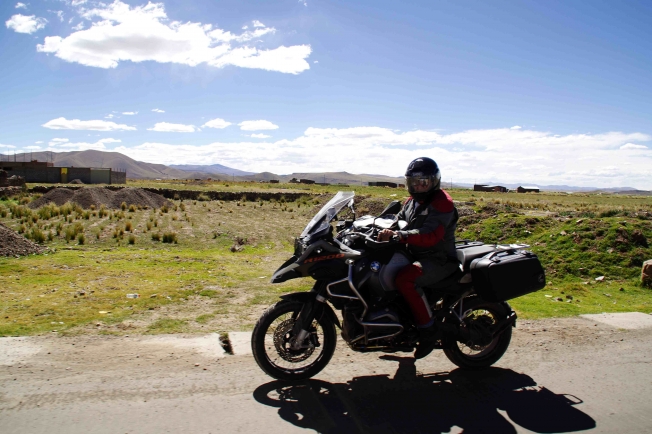
Brian in full swing 
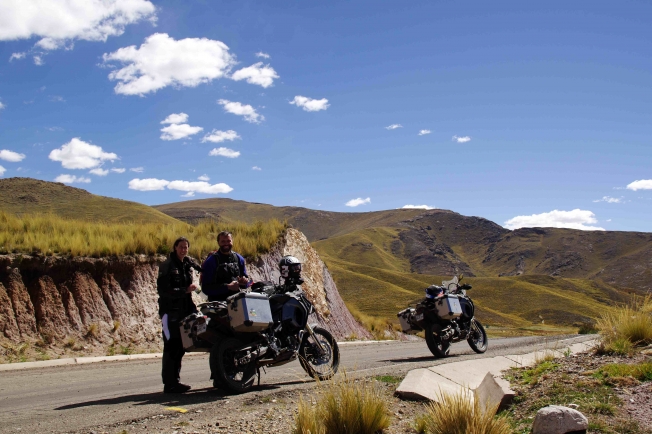
Waltraud and Dieter at one of the many picture stops

The ride to Chivay takes us over the highest point: The Mirador de los Andes - Tramo de la Cordillera Volcanica en los Andes Centrales - at 4.910 meters or 16,109 ft above sea level. Pretty chilly up here!

Talking about highlights... the Colca Canyon near Chivay was really something! Watching the condors flying knocked me off my feet
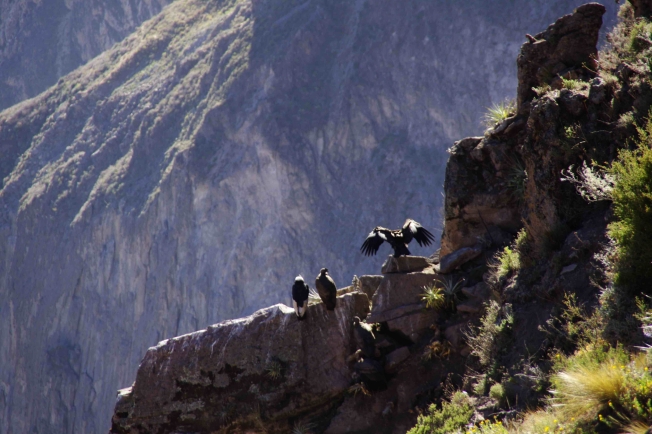
We had to wait for quite a while before those huge birds decided to give us a show

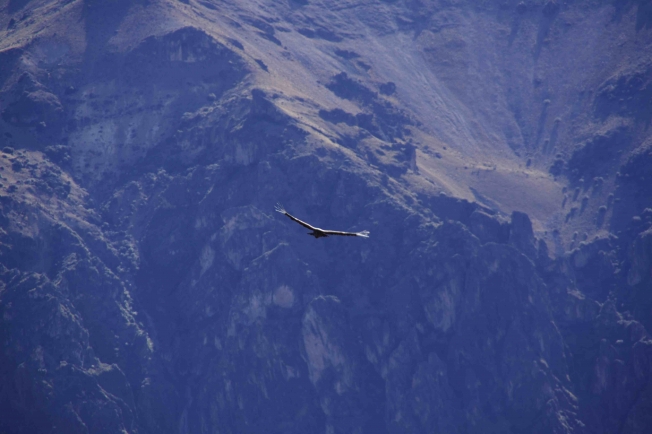
But we were patient and finally the first Condor majestically took off.
Absolutely AMAZING!!! Please look at the pictures because I am speechless 

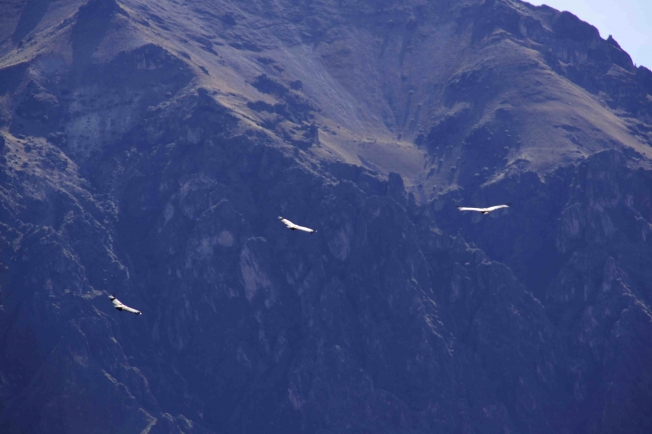
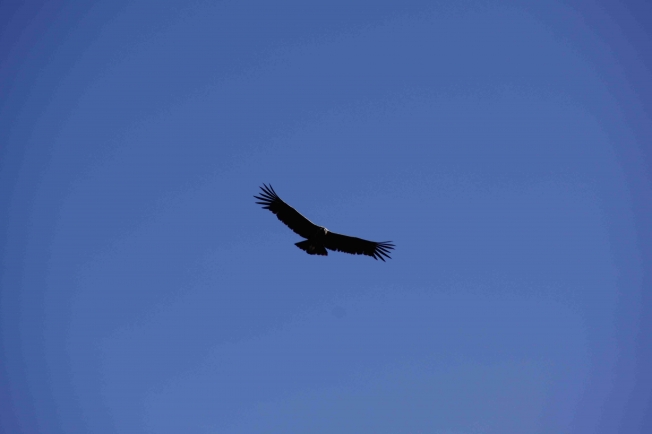
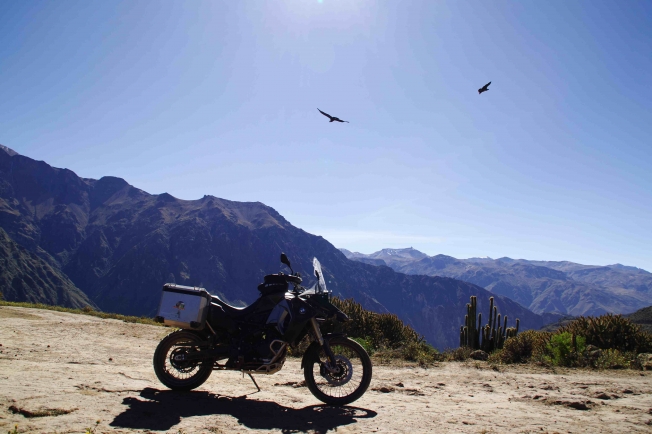
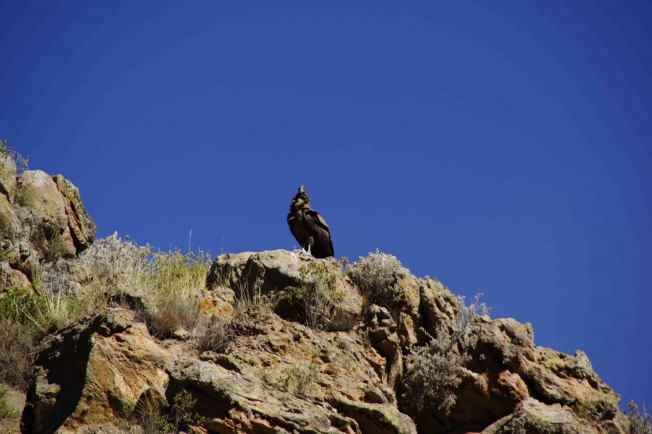

Leaving Chivay again, one of the volcanoes in the vicinity seems to "wave" us good-bye. No worries, the volcano is just puffing out smoke. No other activities
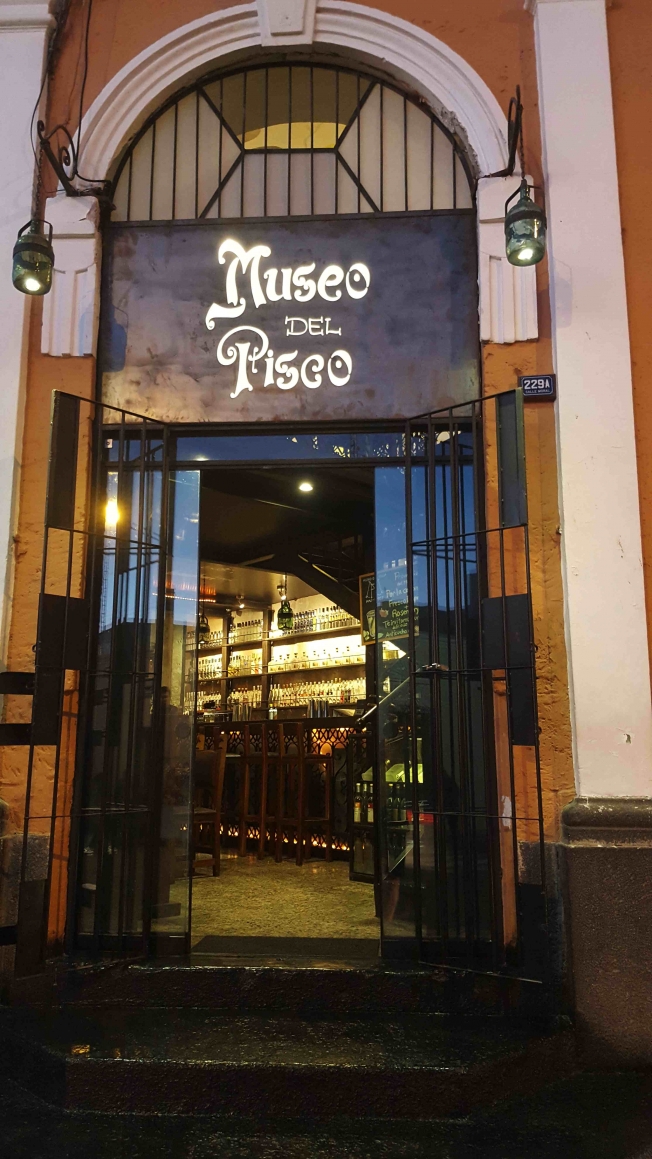
In the afternoon we arrived in Arequipa. Enough time for a stroll around the main plaza, enjoying the bustling life and maybe a Pisco Sour, Peru's national drink.
We will stay here another rest day to see more of the city.
Unfortunately, tomorrow will be already our last riding day back to Chile.
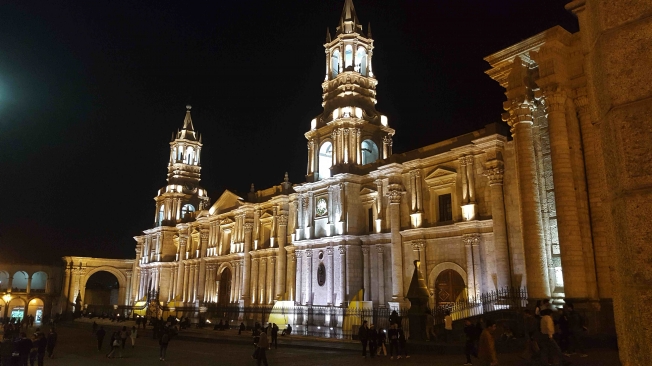
The cathedral at the Plaza de Armas
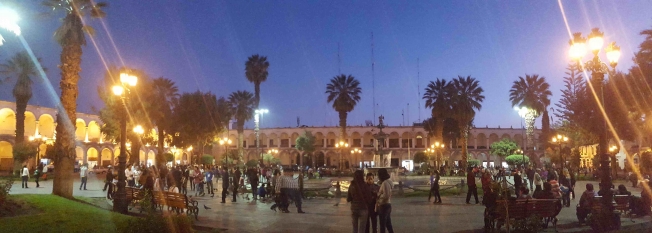
Day 10 - Puno to Chivay
Leaving Cusco early in the morning, we've arrived in Puno at the Lake Titikaka. With an altitde of 3.812 m or 12,507 ft above sea level, Lake Titikaka is the highest navigable lake in the world and the biggest in South America, too. It has a surface of 8.372 km2 or 3,232 sq mi, 60% of it belonging to Peru and 40% to Bolivia. Our highlight this morning will be the Uros, the floating islands in the bay of Puno. Most interesting to learn about the lives of the people living on these islands. Quite different from home 
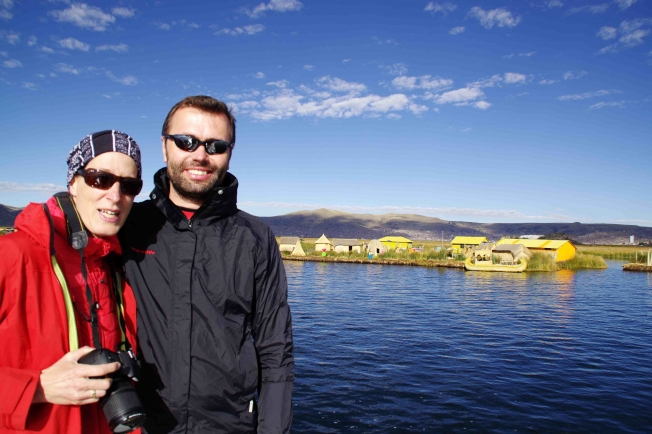
Waltraud and Dieter...

... Caryn, Brad and Brian on top of the boat that took us to the floating islands.
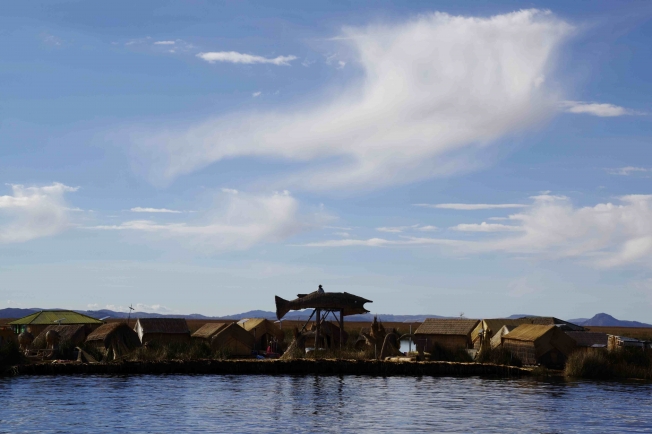
Approaching the quite huge accumulation of floating islands.
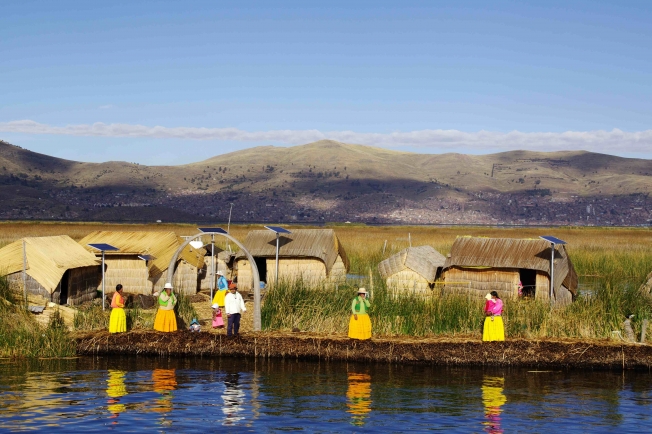
A warm welcome by one of the families
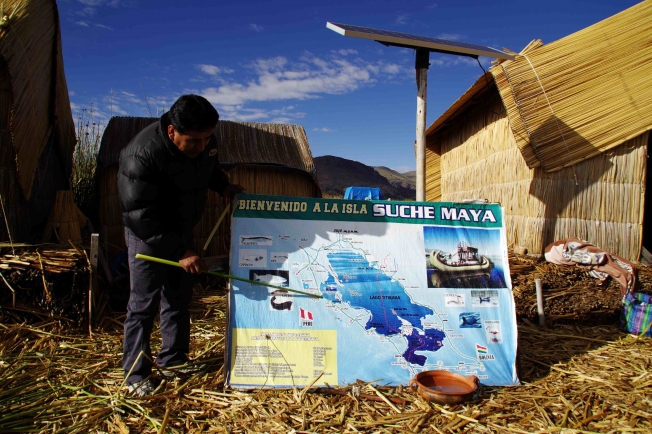
Militon, our guide from Puno explaining lots of interesting facts about the lake and the Uros
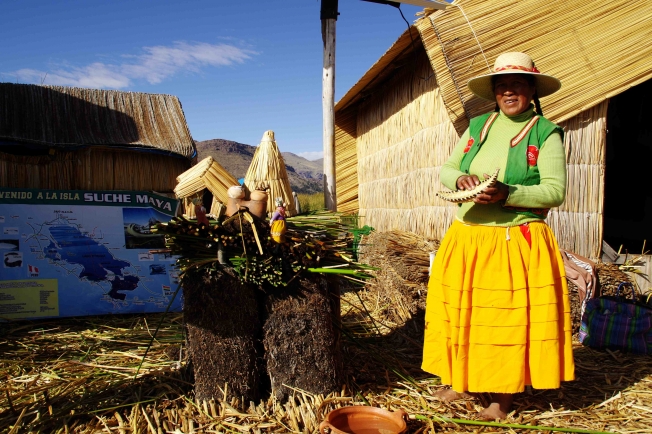
This is the "presidente" of this family on this floating island. With her model she was giving a simple but demonstrative description of how a floating island is built and populated.
Such a floating island is a "flexible" thing. If two families on the island don't get along very well anymore, they either lift and turn their houses around or - worst case - take a saw and saw the island up into two parts.
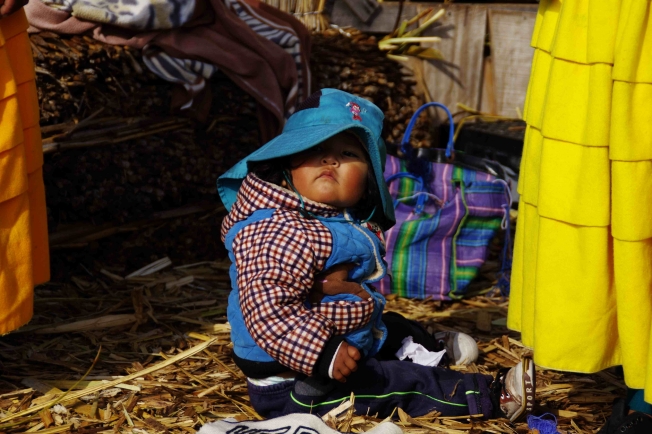
offspring 

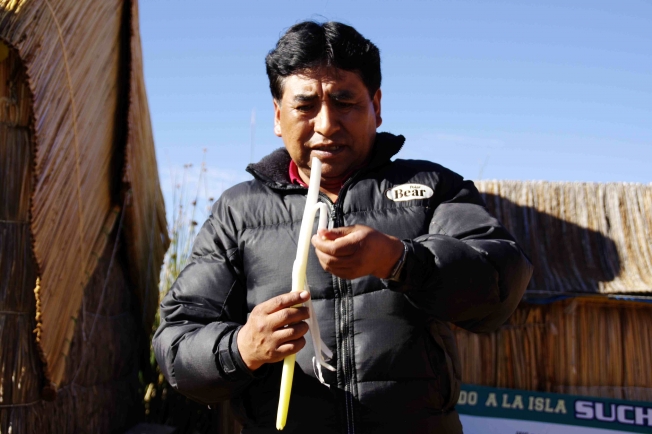
As the people on the floating islands don't have many other calcium suppliers, they eat the bottom part of the reed. Works just like a banana - just peel it 
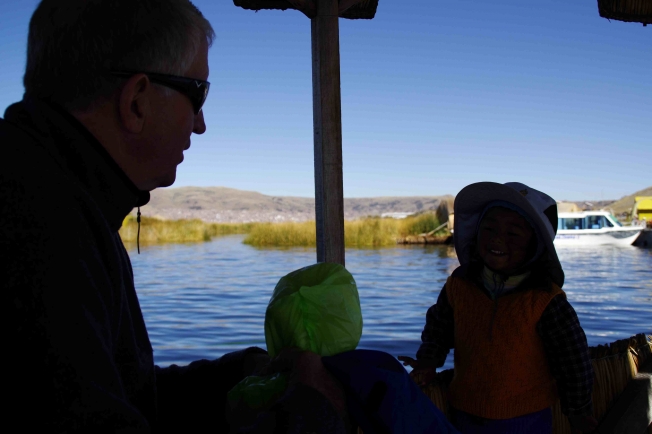
Brad and Pedro, the young Uro boy seem to have a nice chat 

Pedro's mother is not really paddling the boat but rather steering it. An outboard engine boat was pushing the reed boat we took to another of the islands.
Day 8 - rest day in Cusco
In the morning we met Ruth again. She lives in Cusco and once more she shared her profound knowledge about the place. A shuttle bus took us outside town to the archeological park of Saqsaywaman. Many names of places here in Peru are hard to pronounce for a non-Spanish speaking person. But no worries, here you will be given an easy memory hook - Just say "sexy woman" and you'll be alright 
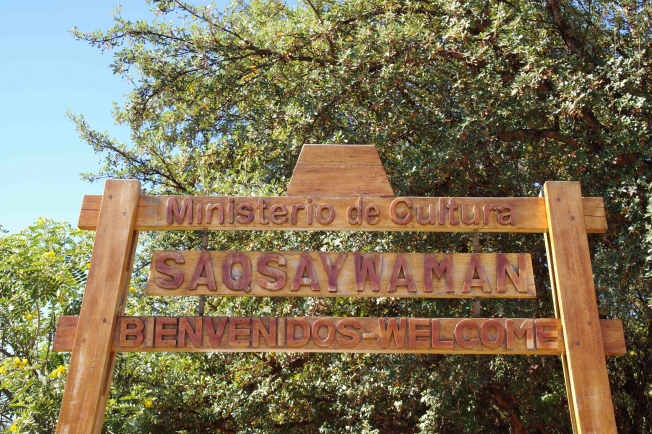
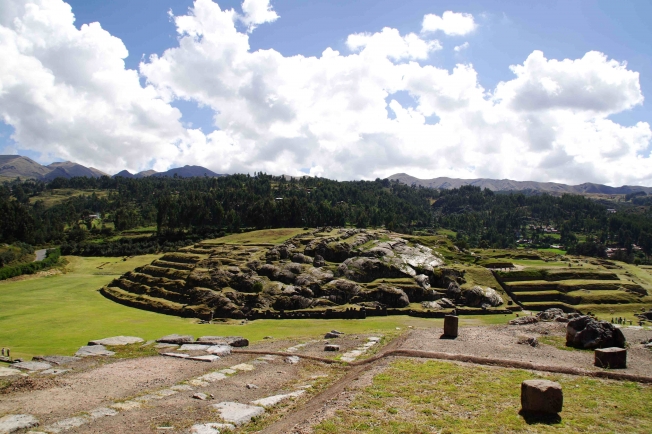
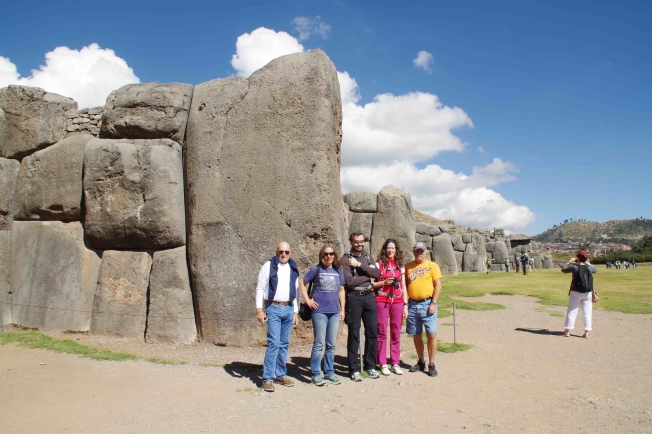
Until today, archeologists and historians have not been able to discover all the secrets of the Inca culture. But still we could learn a lot from Ruth and listen to many most interesting stories about former rulers
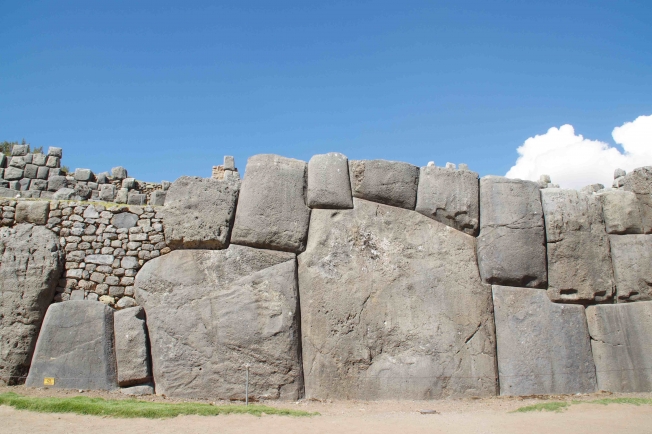
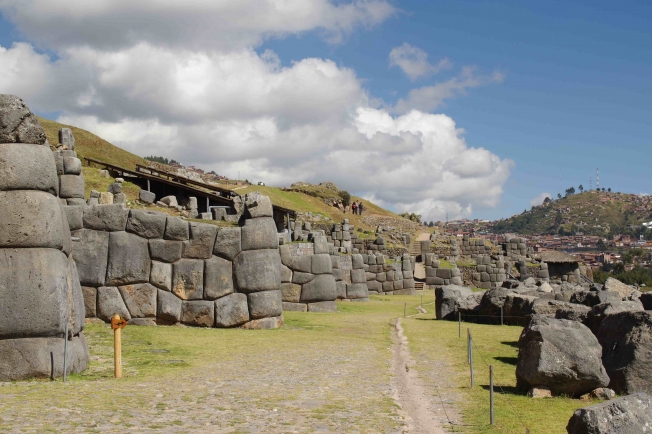
This is the zig-zag wall (or the foundation of it) that runs around the place in a circle. It is supposed to represent a lightning.
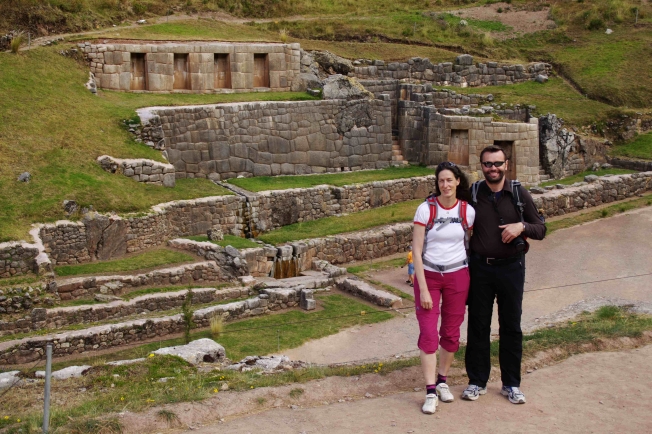
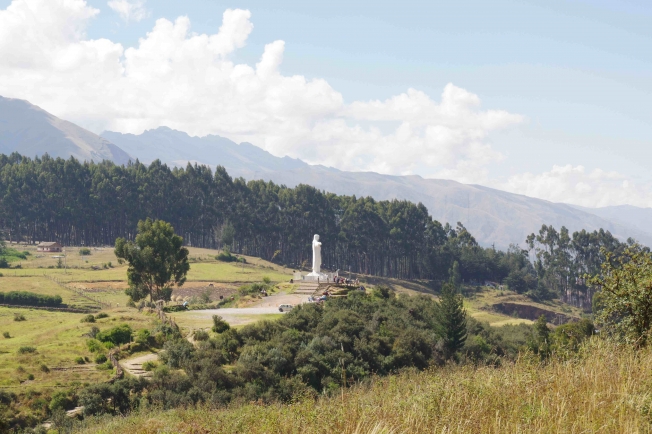
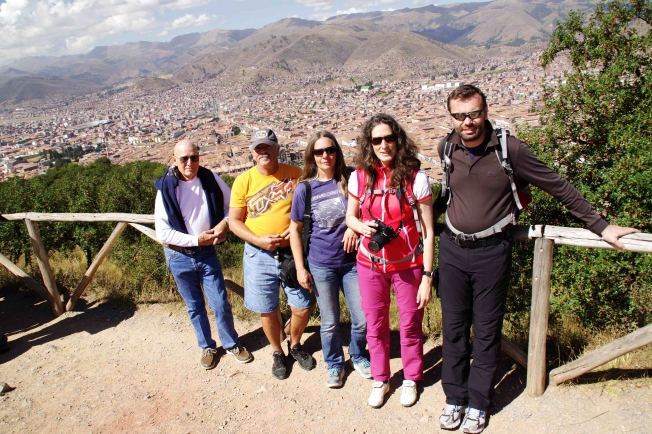
Nice view over Cusco from Saqsaywaman
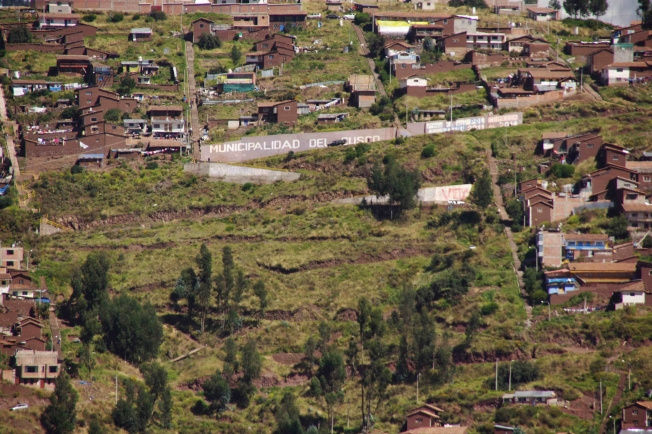
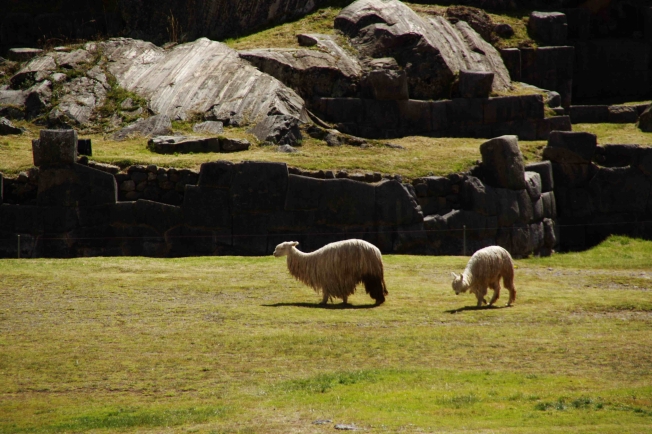
Hair dresser very urgently needed here... This is a type of Alpaca that grows its fur almost to the ground
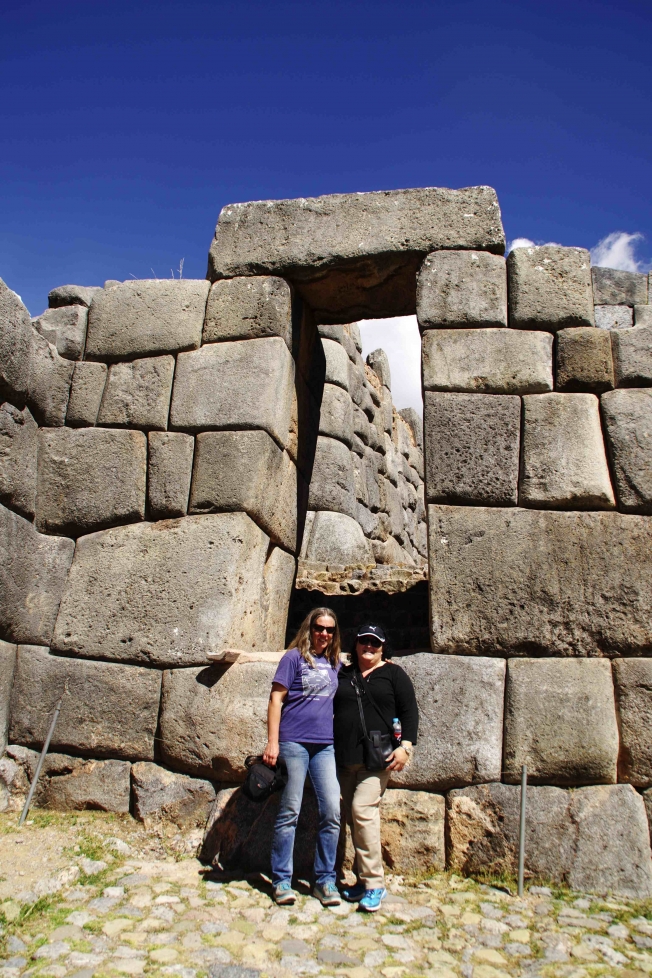
And then there was one of those completely unexpected moments in life ... Right at the sun gate, all of a sudden someone says "hello" to me - I met this nice American lady who was on an Edelweiss tour with me in 2014 in the Alps! And here we meet again, two years later at the sun gate of Saqsaywaman in Peru! Crazy world sometimes, ain't it 
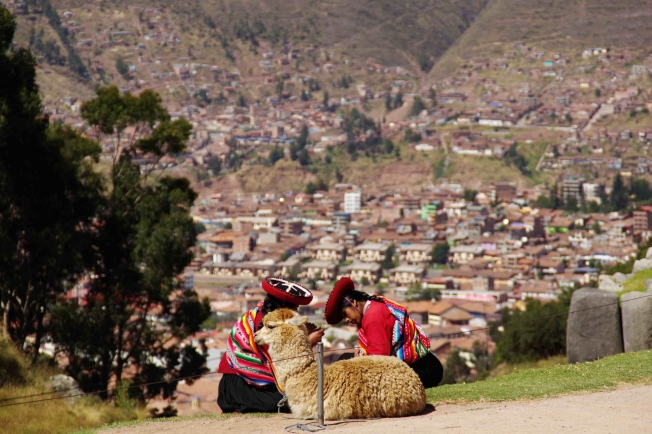
Peruvian women in their colourful traditional dresses.
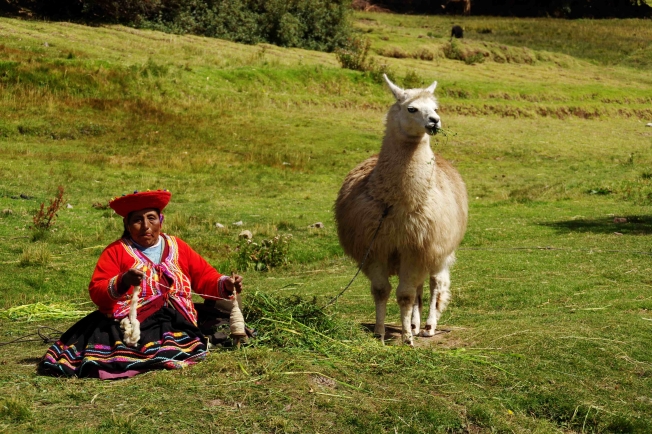
It looks like this woman is stuck in the ground with her feet and spinning the wool directly off the Alpaca 
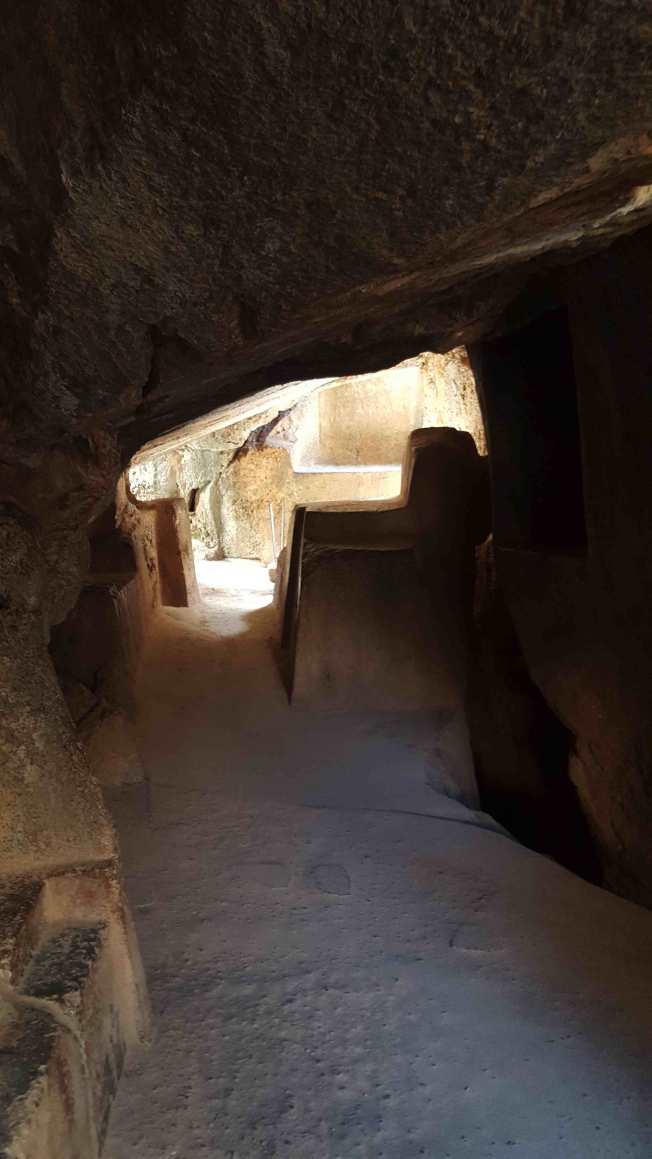
The last place we visited in this archeological park was Q'enqo. It is a kind of a maze where the Inca performed mummifications.
Can you recognise the head of a Llama - turn this picture around 45° to the right and then try to figure it out

Day 6 Ollantaytambo - Cusco
Only a short ride of about 100 km brought us into the most beautiful and most famous city of the Inca culture. At the time of the Inca Cusco was the place where everything was organised and where all threads were coming together.
We have another rest day here to explore and learn more about the city.
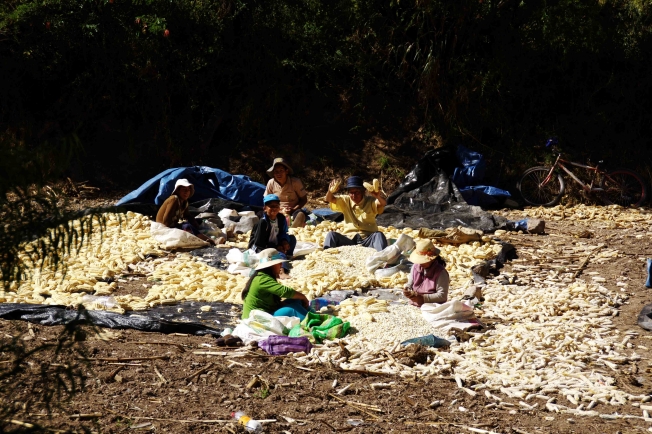
At this time of the year almost all the crops have been harvested. Now the corn has dried and can be processed.
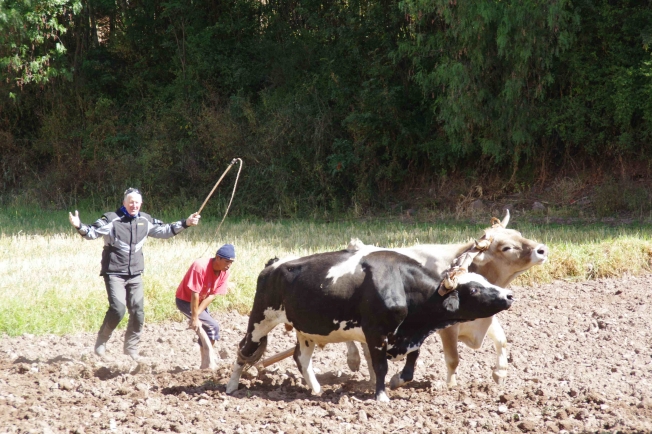
Hard field work, but we found someone who helped out for a little while  Great job, Brad!
Great job, Brad! 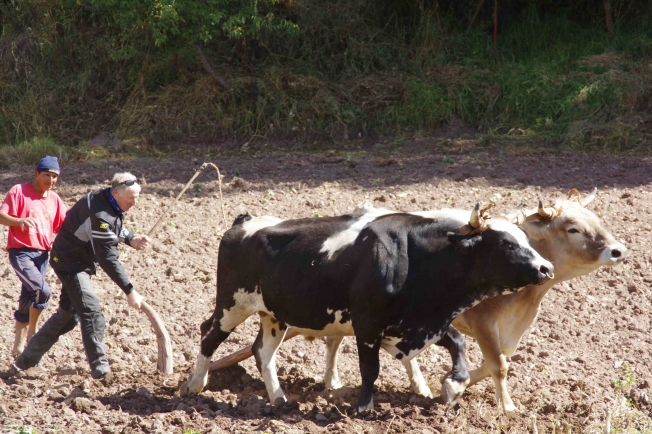

At the entrance of Cusco there is a nice place with that Christo Rey statue that allows for a great view over the city.
To the right is Victor, our reliable mechanic.
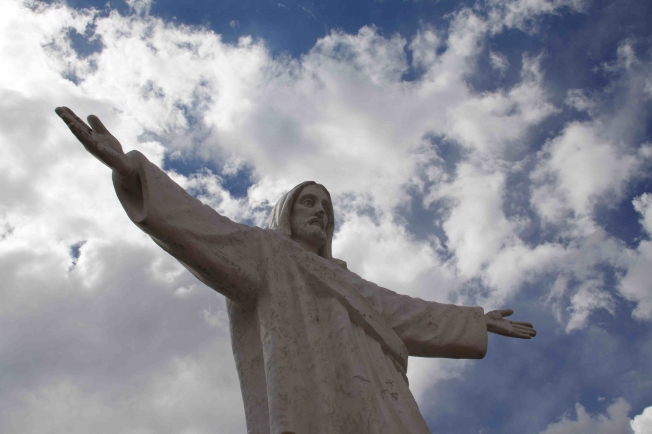
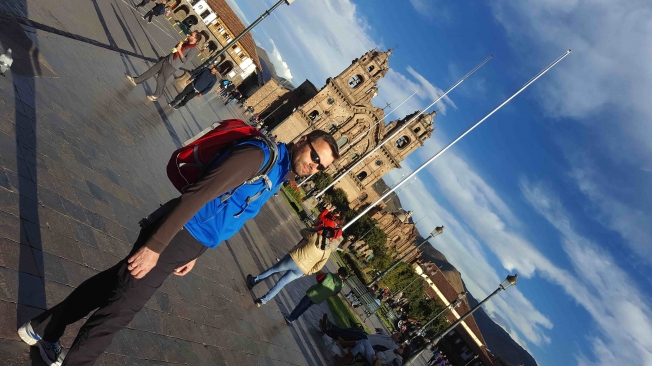
In the afternoon we were strolling through the busy alleys and to the Plaza de Armas. The foundation of the buildings in Cusco's old town are still from the Inca time, despite the Spanish invasion and the Spanish construction style they have survived the time until today.
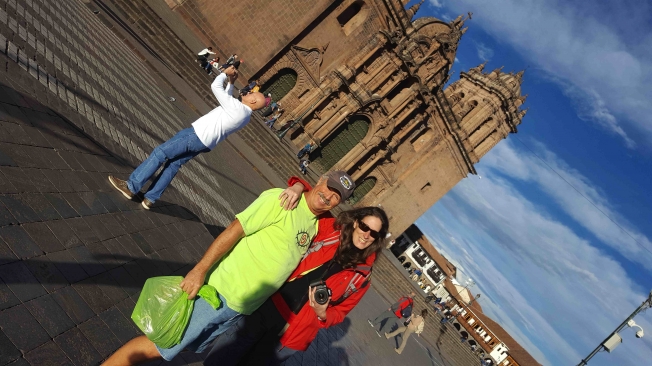
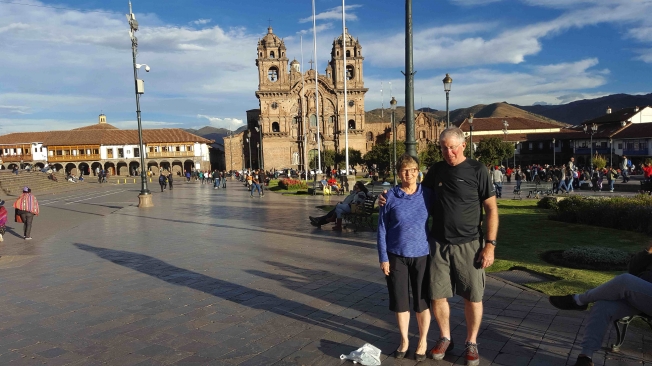
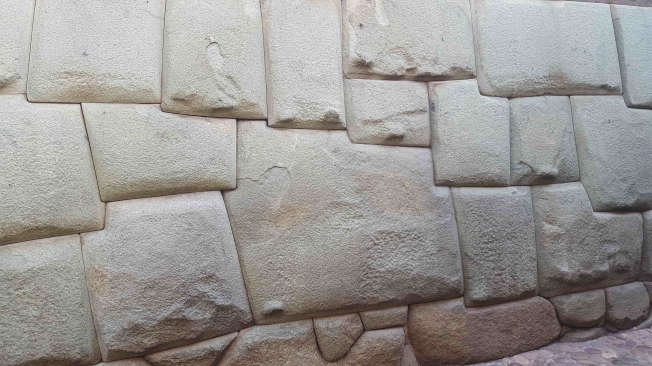
In one of the alleyways there is the wall with the most famous stone - check it out, it has 12 (!) angles

Well, we were all pretty hungry already. So we had an early dinner and an even better evening.
Great fun this game we played 
Day 1-5 Arica - Moquegua - Puerto Inca - Nazca - Challuanca - Ollantaytambo
The Adventure Machu Picchu tour came as a surprise at short notice for me - as a wonderful one, I should add. Having had the enjoyable experience of travelling South America last year already with the Adventure Altiplano tour, I was very much looking forward to another opportunity to discover another part of this continent.
Although we have our tour start location in Arica, Chile, our travel itinerary takes us around mostly in the south of the 1,285,000 square km Peru. Being the second largest state of South America, Peru shows an amazingly vast variety of stunning landscape. The huge differences in altitude, and consequently also in climate, offer stunning impressions for us motorcyclists.
In our group of riders we have Caryn & Brad, Brian and Greg from the United States and Waltraud & Dieter from Austria. We are absolutely enjoying the chilled rides in our small, almost family-like, group 
We have been on the way already for 6 days and today there is finally the best internet connection so far to be able to tell you about our great adventures.
You're welcome to enjoy our pictures 
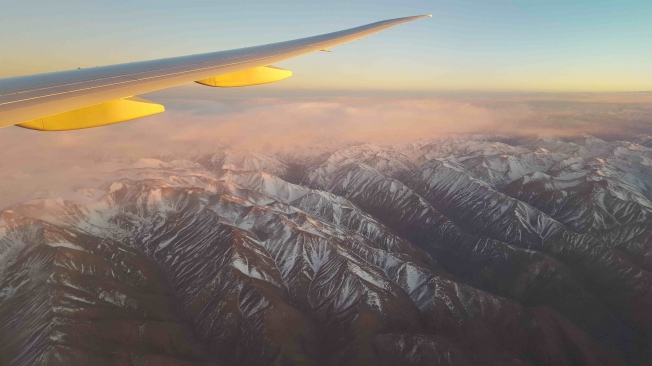
Already the arrival in Chile promised that there will be fascinating nature waiting for us
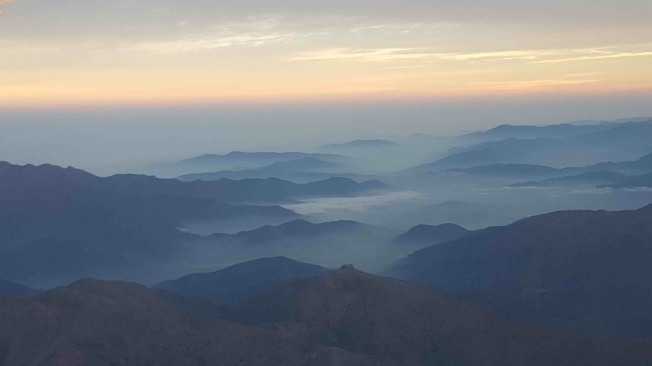
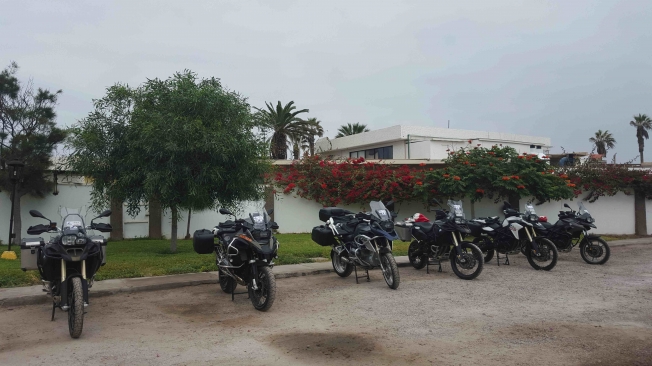
Everything is prepared for the arrival of the riders and the bike hand-over
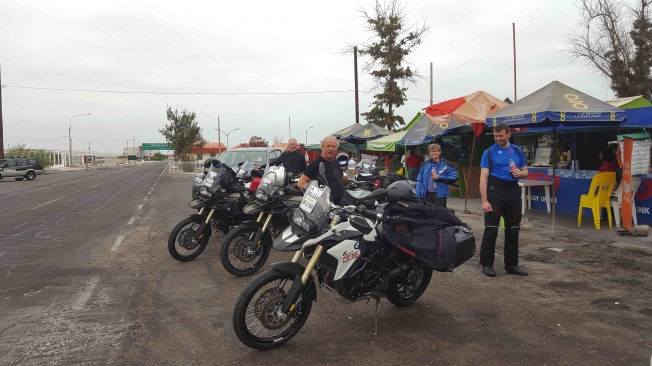
We've successfully mastered crossing the border into Peru and are enjoying our first rest stop
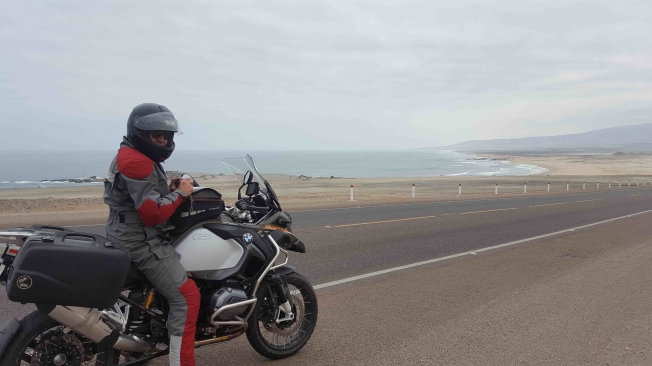
It didn't take long before we arrived at the coastal road on our way to Moquegua. Here is Brian on his 1200 GS A
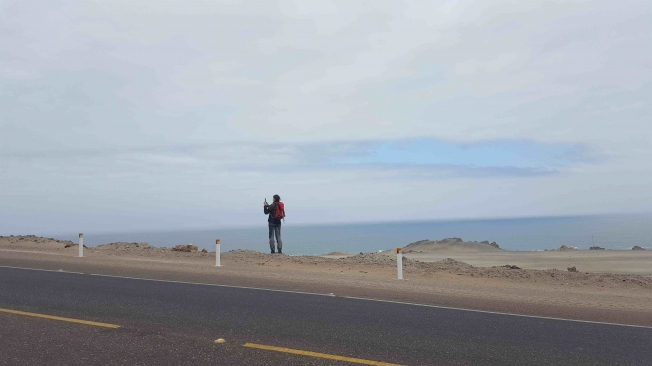
Each of us is impressed by the mind boggling vastness and emptiness of the desert-like coast. This way it is pretty easy to forget about the daily grind 
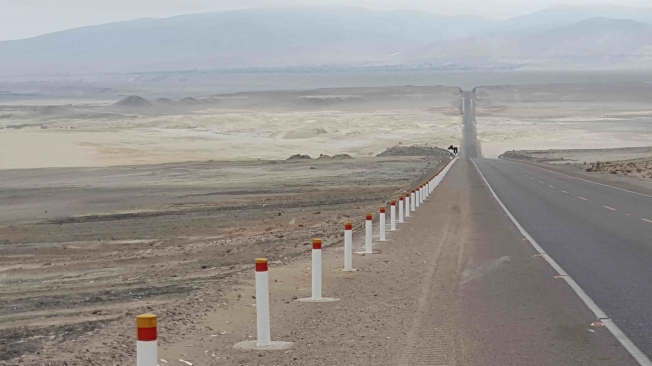
This time, as a rare exception, thank god there are not too many curves. Makes it a lot easier to take in the landscape impressions 

A street in Camaná, our lunch stop on the way to Puerto Inca,our second overnight destination in Peru.
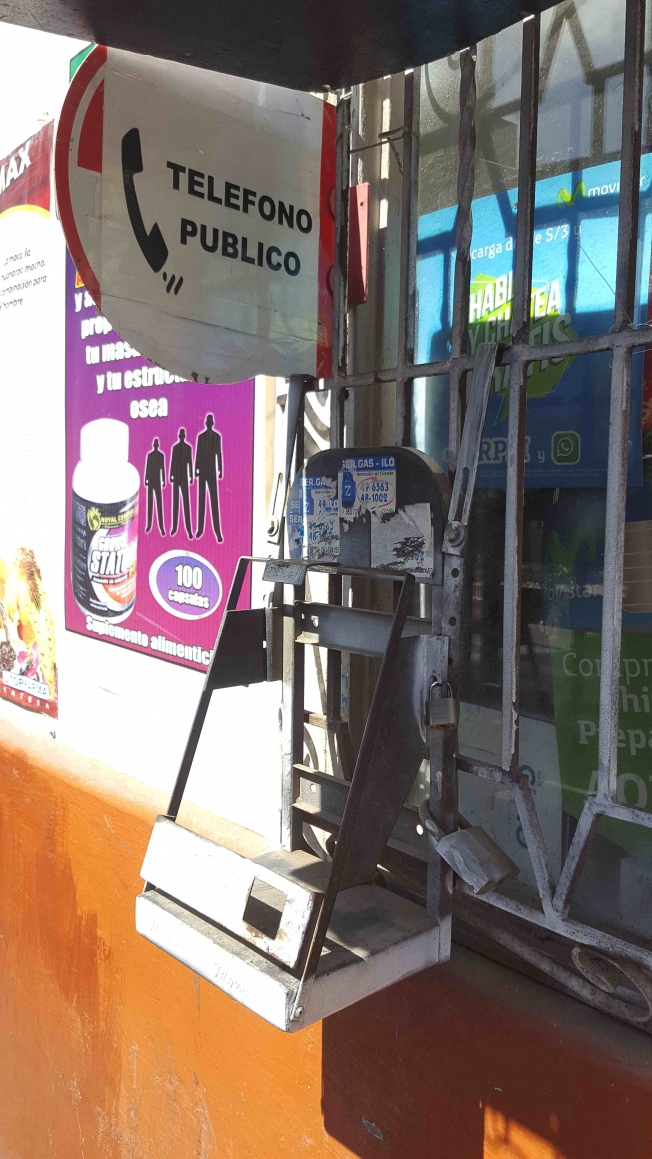
Same as the internet, the phone connection sometimes is not the best 
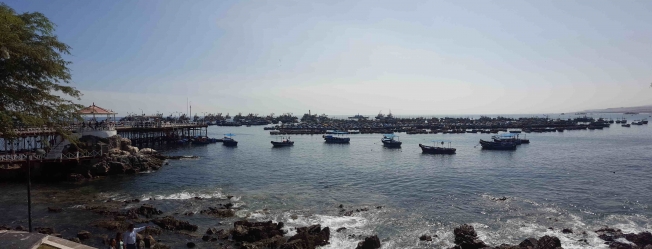
In Camaná fishing is, of course, a big business. Lots of restaurants along the city's coast line sell great seafood
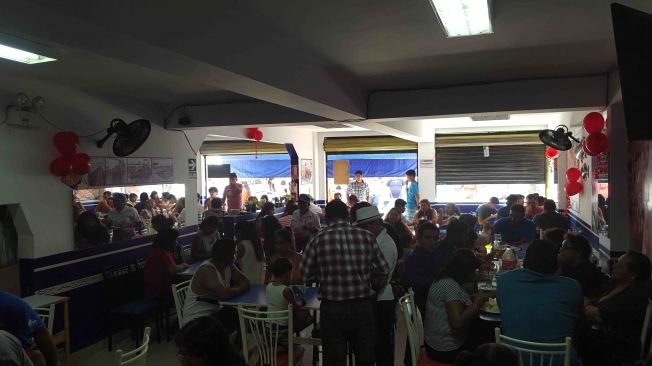
Well, as anywhere in the world the rule is true in Peru, too - go and eat where most people go.
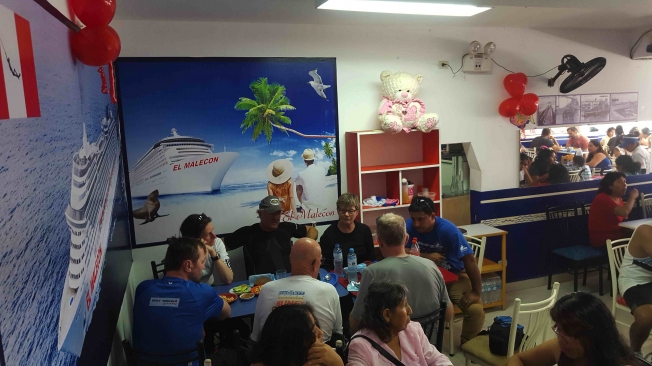
We just got the last table in the corner and enjoyed our delicious lunch...
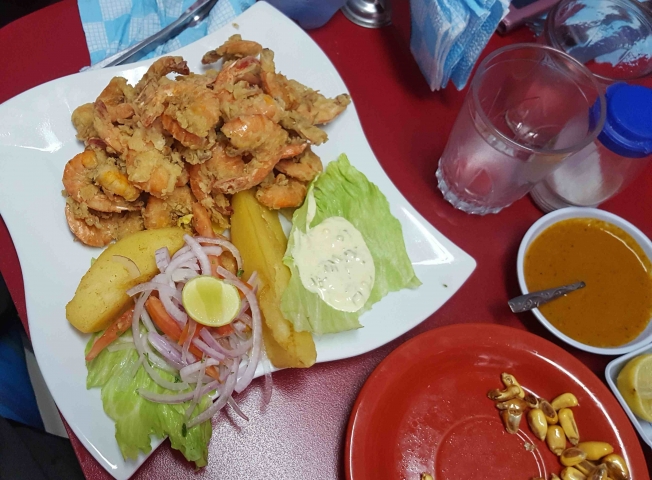
... which was breaded shrimps
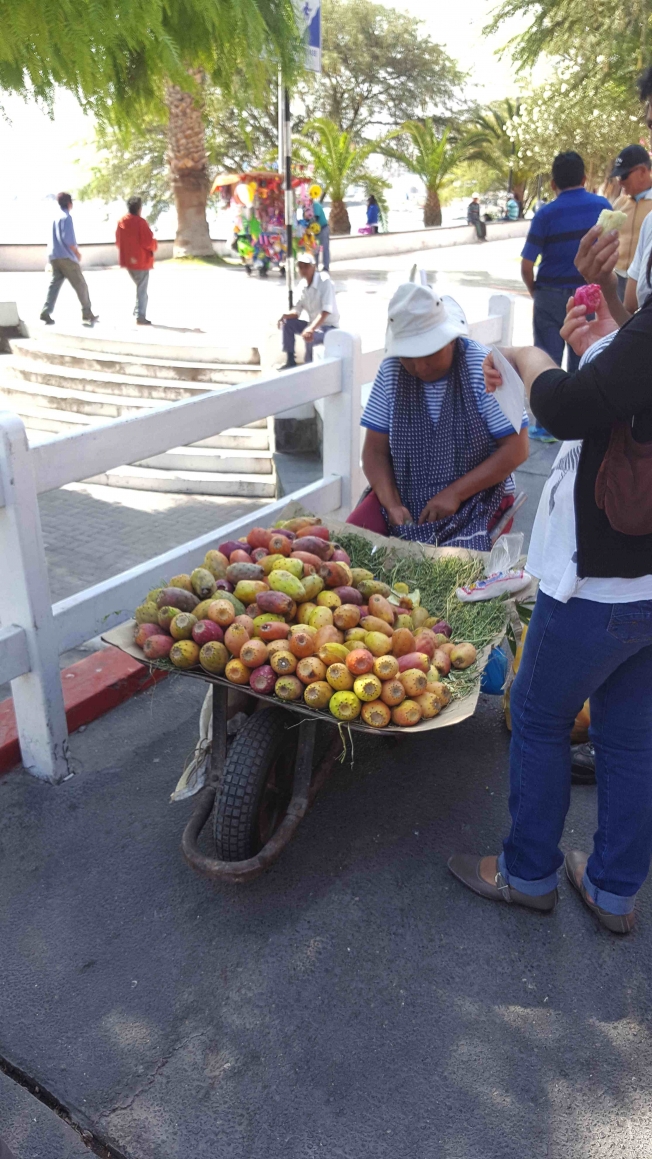
As a dessert, the cactus fruit was most welcome

For the rest of the day our route took us more or less along the coast. The desert and the sand dunes end right at the shore.
You would never think about anything green or flourishing here.

Desert mountains accompanying us...
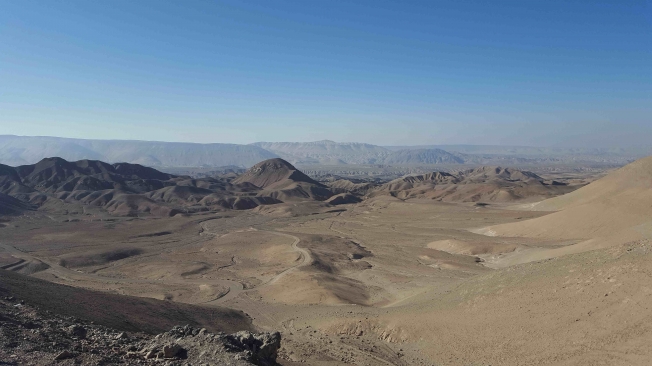

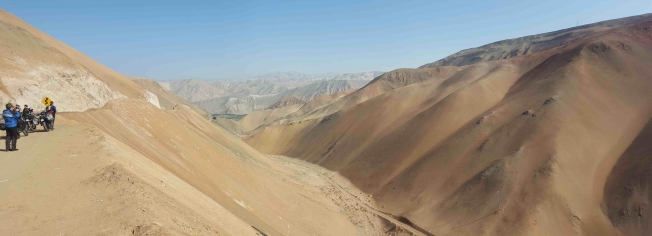
... but the most impressive vista are the mountain-like sand dunes. I've never seen sand dunes reaching up to 1000 meters!

Riding along the winding coastal road makes you just feel great. Here are Waltraud and Dieter ...
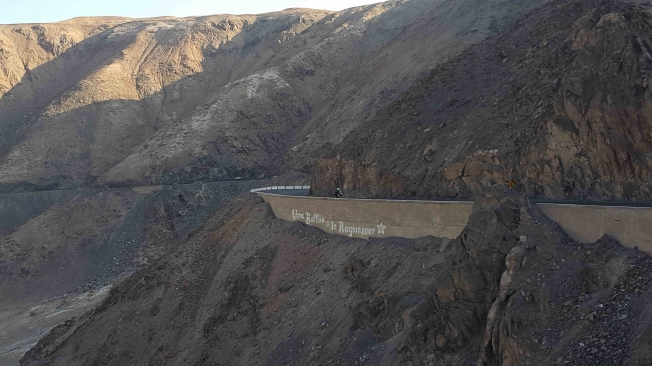
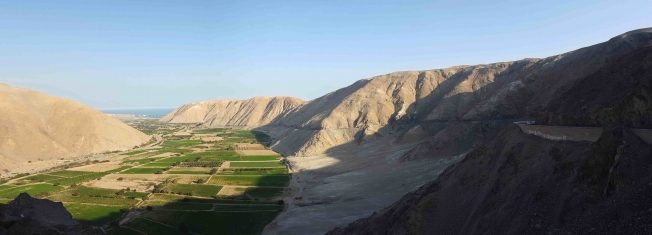

... and Brian grinning from ear to ear 

Brian came with his buddy Greg. They match each other perfectly and we are having a lot of laughter with the two of them 


In some places the sand dunes reach the ocean and the road, consequently, needs to run right through it.
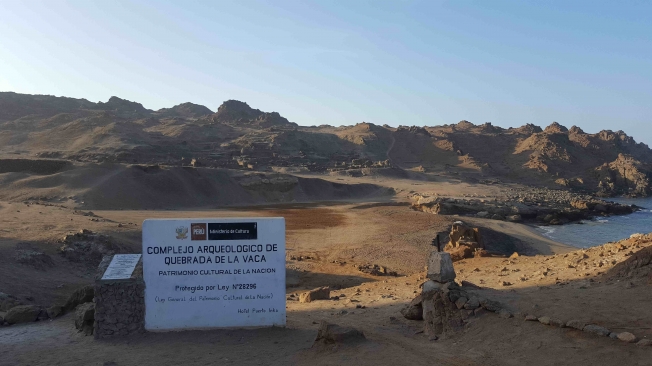
Our second riding day on tour was a very long one and we reached our hotel right after sunset. But we wouldn't have wanted it any other way, because the ride into the sunset was unbeatable.
Next morning then we saw more of the beautiful place we were staying. In Puerto Inca there is nothing but one hotel. The great thing about the place are the ruins of the first Inca settlement we got to see on our tour.

Having had a long day before, we took some time this morning to stroll around the ancient settlement. In some places it feels like walking on the moon.
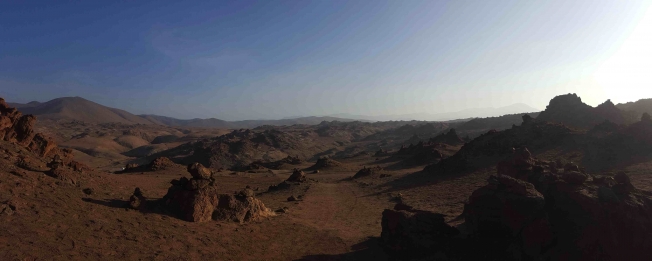
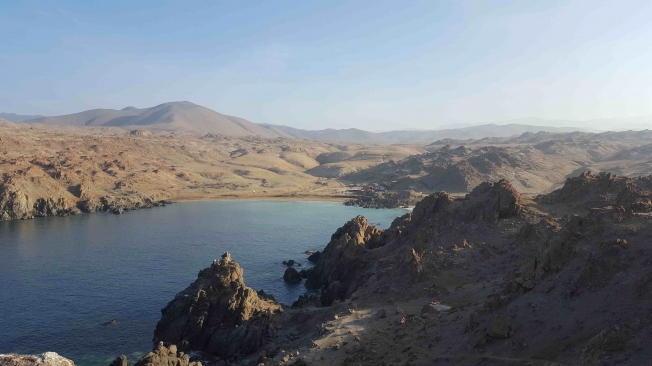
Puerto Inca from the distance.
Greg, what did you say was the altitude here? (insider 
 )
) 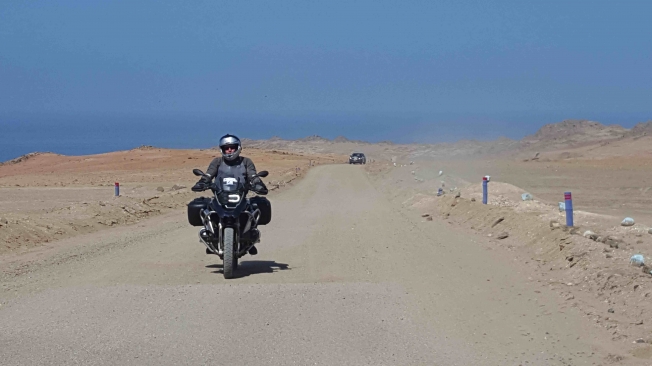
Leaving Puerto Inca again, we were heading for Nazca, which we reached in a short ride
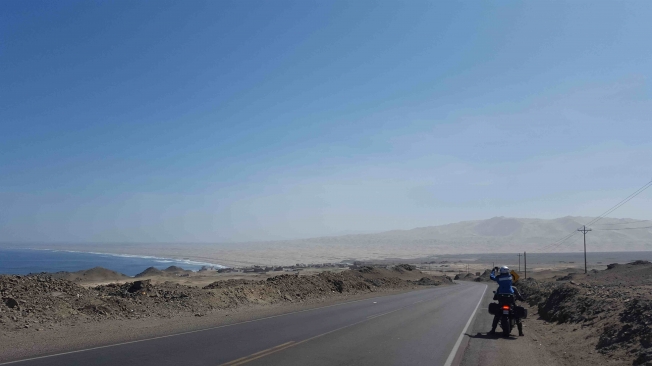
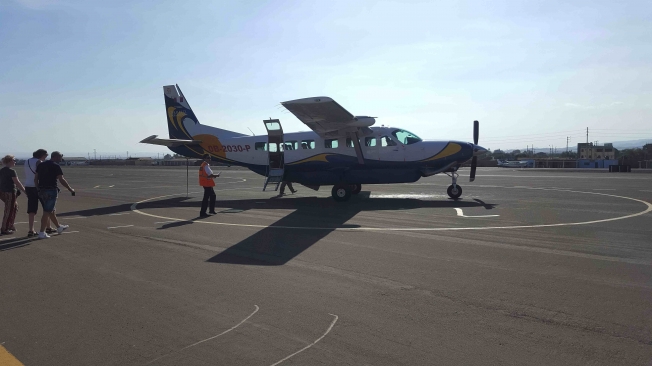
The reason for our early arrival in Nazca was, of course, to take one of these little air hoppers and to fly over the famous Nazca lines.
At the time of the Nazca, people where "drawing" humongous pictures of typical animals or other creatures onto the ground. Being a desert area, you can imagine that this must have been hard for them to work days and days in the blazing sun. But don't worry! Some of us were suffering, too, this afternoon ... 


We still didn't think of seeing more fertile areas on our ride out of Nazca. Today's priority was to take it easy anyways. From around 600 meters above sea level the road would take us up onto altitudes of more than 4.500 meters!


So now, finally, here is the moment to realise that, of course, there is more to Peru than only desert. Up in the mountains the first greens showed up ...
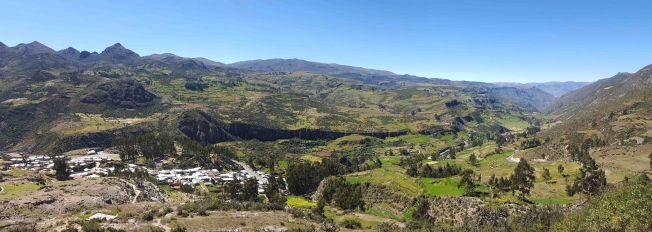
... and to our big surprise the landscape we found here made us almost feel as if we where at home in the Alps!


Greg and Brian taking a breather after the amazingly winding road

Peruvian waitress - articled 
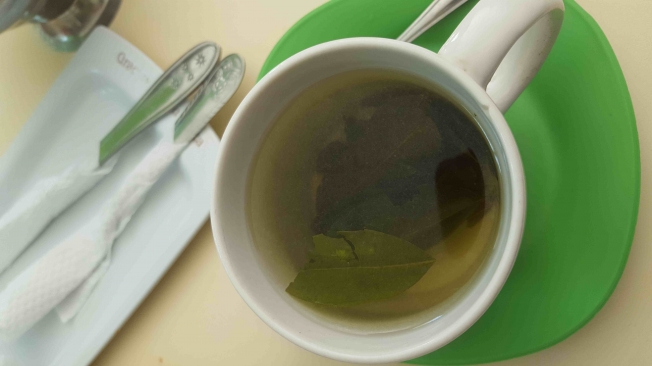
Coca leave tee - a recommended remedy or better a preventative means for the altitude sickness. For the indigenous people in the Andes the coca leaves are a natural part of their life.
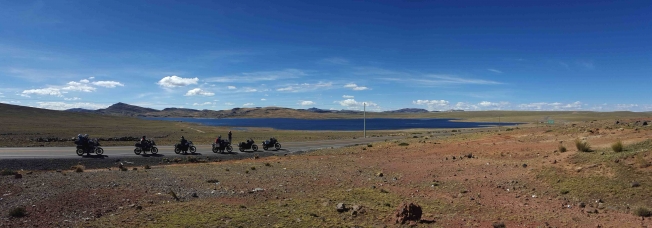

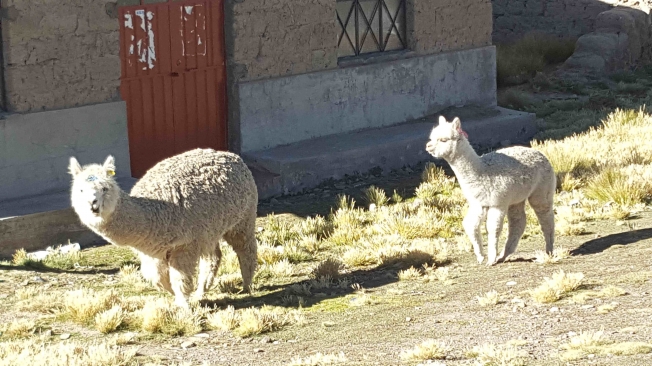
Alpacas, Llamas and Vicuñas are the original animals here in South America. The Spaniards, invading the country in the 16th century, brought other animals such as cows, sheep, etc.


After the Alps-like landscape we experienced during the day, we were entirely disoriented when we arrived at our today's location for the night. You truly feel like you're in a small Italian village 
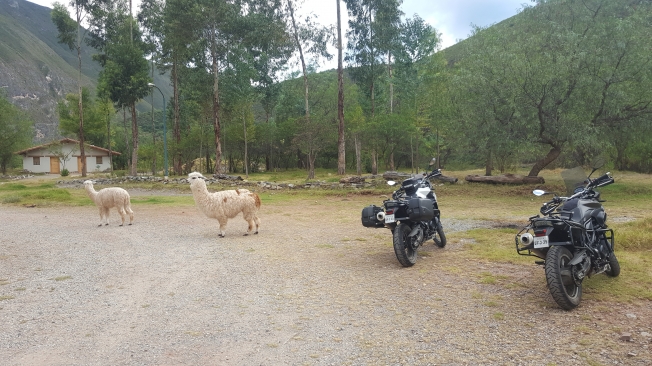
The next morning gave us hard decisions... motorcycling or Alpaca-ing?

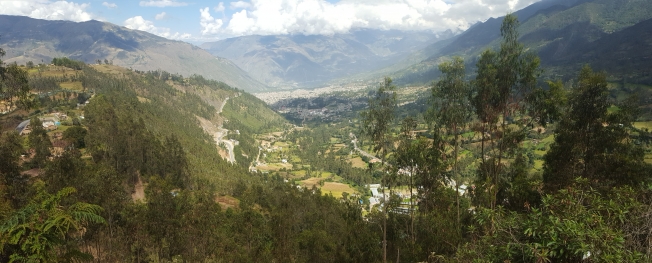
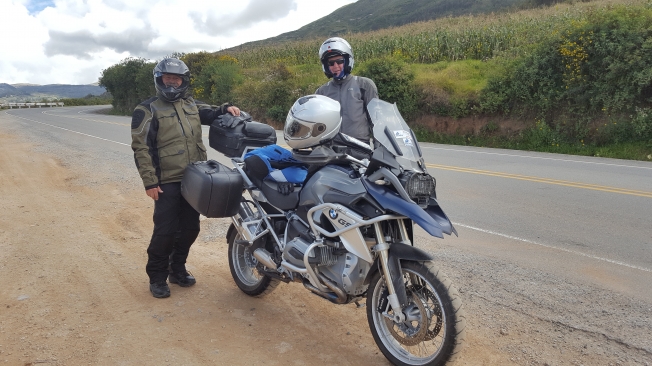
The fantastic landscape seems to be never-ending.
Greg and Brad and ...
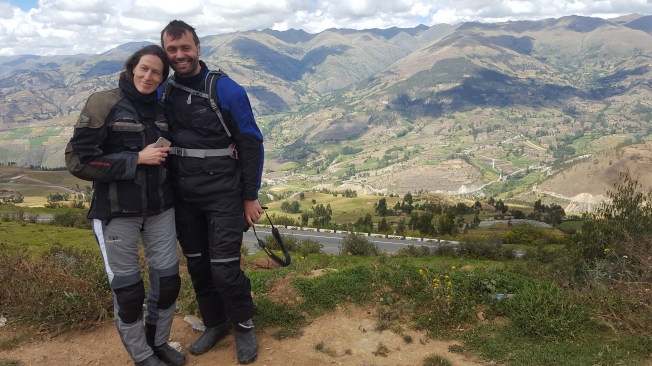
... Waltraud and Dieter enjoy their rides.
I think it is just great to stop every now and then for a picture and have a cookie and water from the chase vehicle instead of sitting in a café. This way we can stop more often to enjoy the scenery.
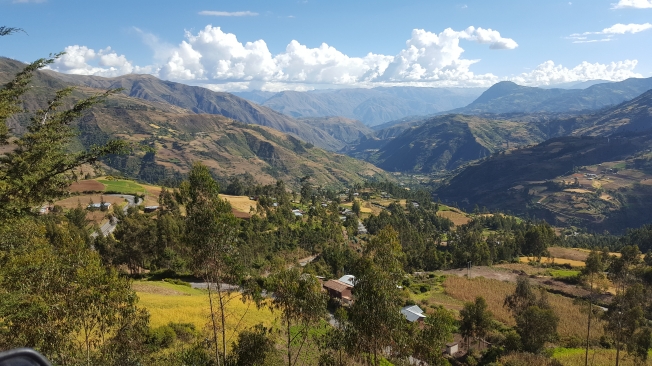
But on some of the roads it is simply hard to stop at all because the flowing ride on those sweepers is so wonderful that it is simply impossible to interrupt your ride
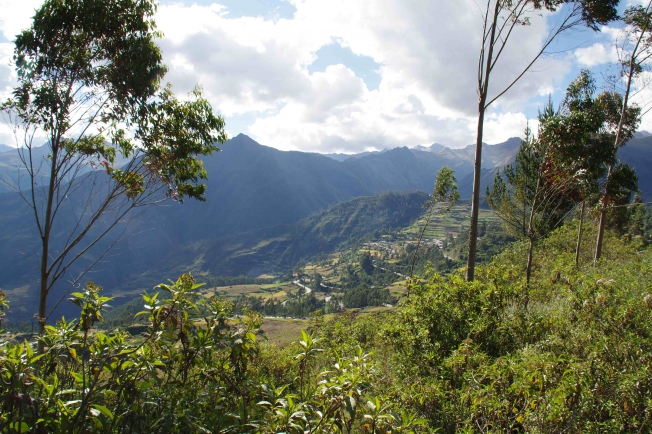

The last part of today's ride brought us to the ancient Inca village Ollantaytambo which serves as a base for the visit to Machu Picchu for many visitors. So it is ours, too
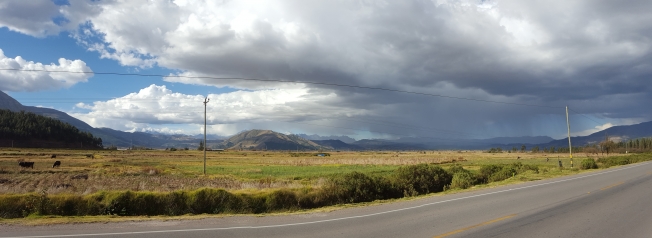
But what is this? Rain? Well then, for a change and for only a couple of minutes we jumped into our rain gear
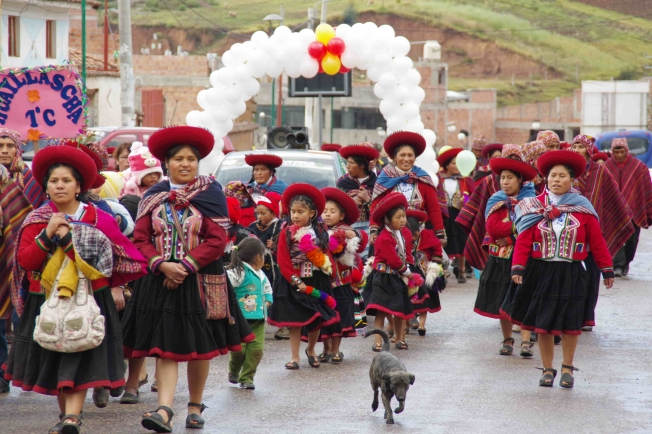
In the very small village of Chinchero a surprise was awaiting us. All of a sudden we were surrounded by the parade of the local school children in their traditional dresses. There was absolutely no way to continue our way. What a great experience - definitely the highlight of the day!
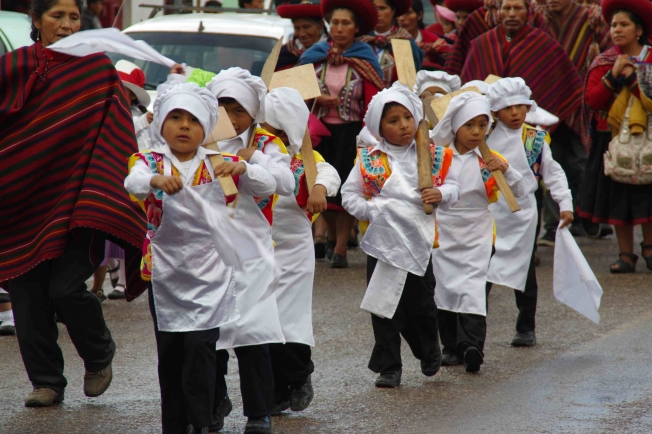
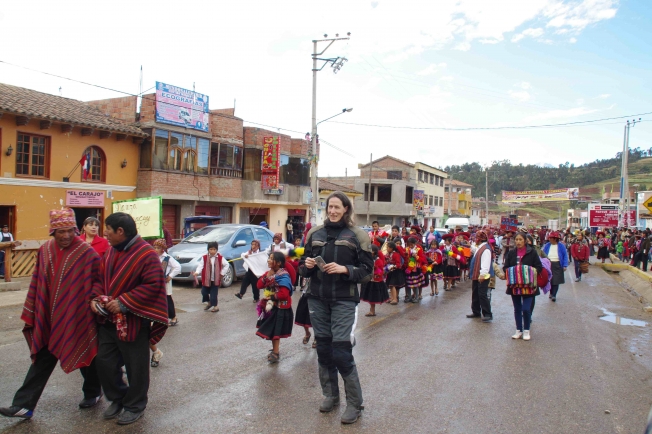
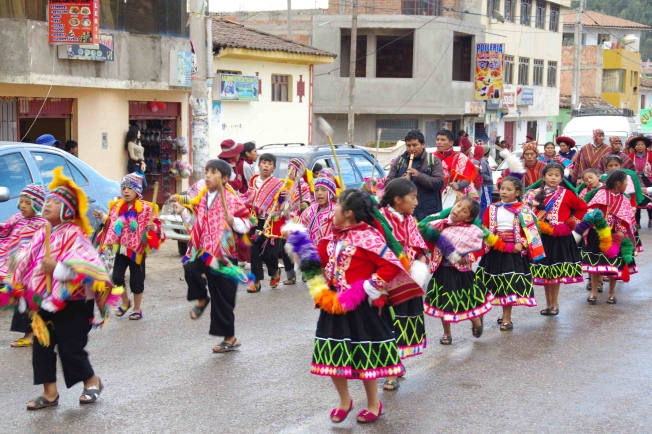

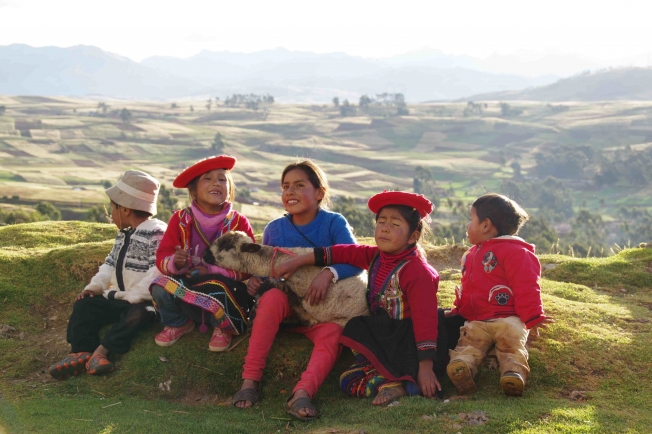
A photo opportunity shortly before Urubamba. Local children, but wait - only local children? ...

A welcoming opportunity for Greg to sit down 

Early in the morning of our rest day in Ollantaytambo, Peru Rail took us to Aquas Calientes, or Machu Picchu town. From there, a bus took us on an adventurous ride up to the famous Machu Picchu ruins.

Brad, Caryn and the rest of the group lining up to enter the train. If you thought, people from Germany or Switzerland are showing high qualities of correctness or queuing, you're wrong ...
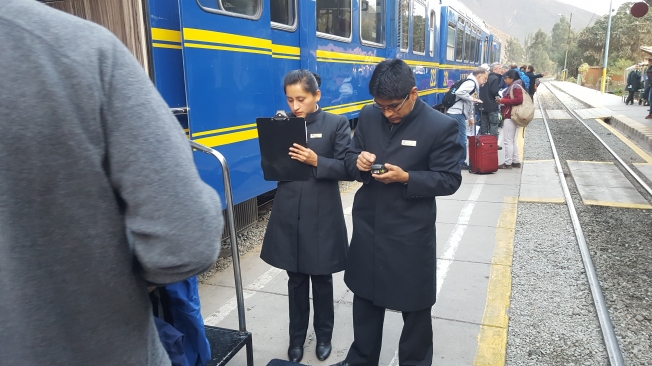
... in Peru, lining up for the train is an extremely organised and precisely followed procedure
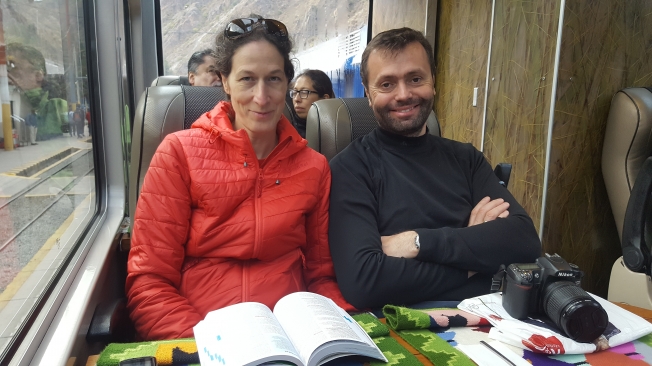
Waltraud, Dieter, and ...
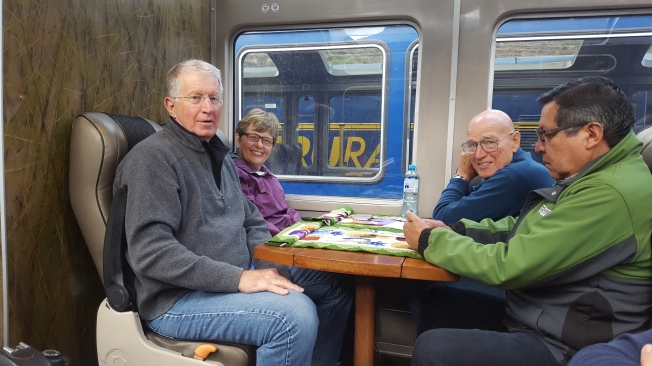
... Brad, Caryn, and Brian are ready for the ride
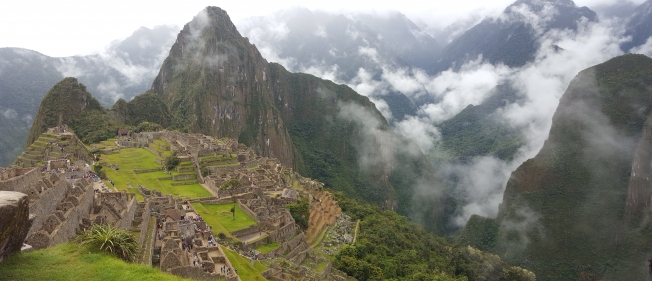
The ruins of Machu Picchu - very impressive, although there are many visitors to it. Have a closer look to the mountains in the background - turned by 45° counterclockwise the mountains reveal a face. Can you see it?
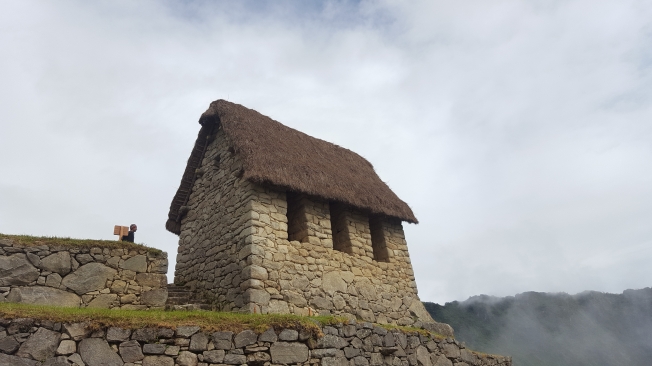
A storage house in Machu Picchu
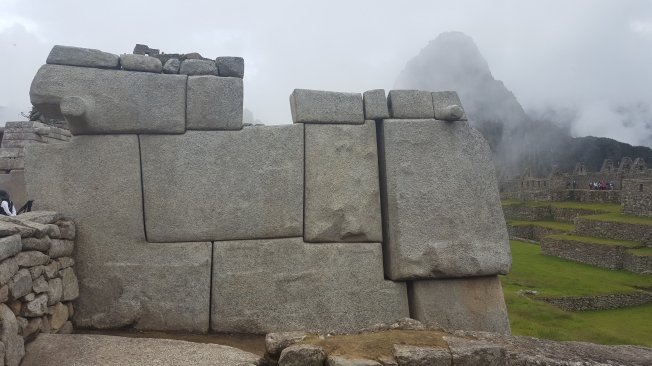
Incredible techniques the Inca used for the construction of their buildings. Each stone precisely fits the neighbouring stone and you couldn't even put a sheet of paper in-between!
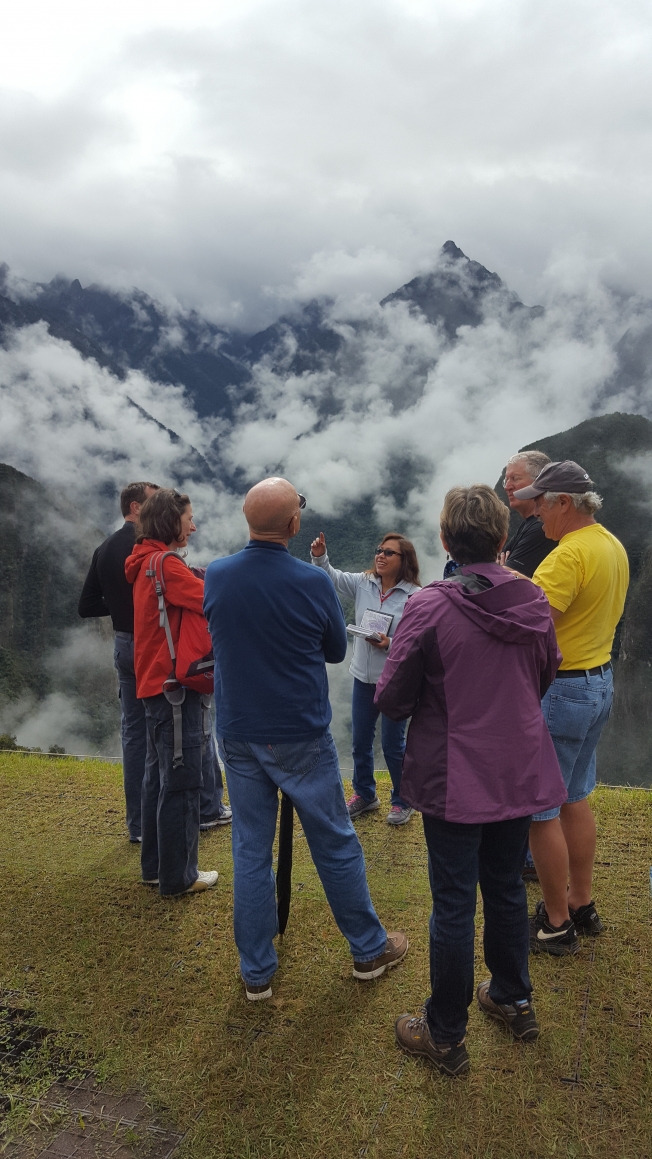
Our knowledgeable guide Ruth explained us all about this fascinating Inca culture
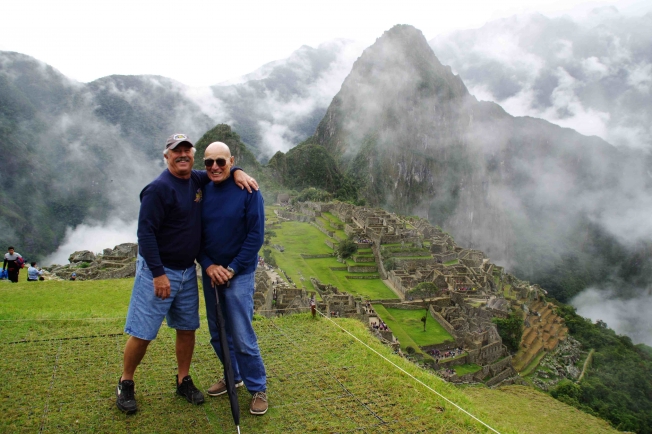
Brian and Greg

Machu Picchu without a group picture - a no-go! 
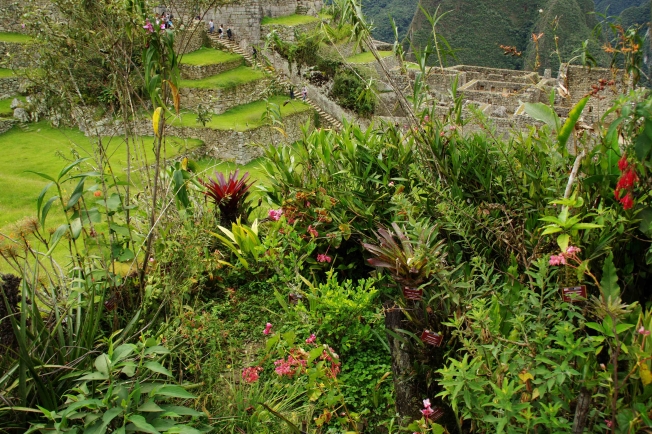
Can you find the predominant plant of Peru in this picture?

Walking in high altitude takes your breath away. Luckily there is a bench half way through the walk.
From left to right: Brian, Greg, Dieter, Waltraud, Angela, Ruth's daughter, Caryn and Brad.



































![]()











![]()

























![]()
![]()











































































